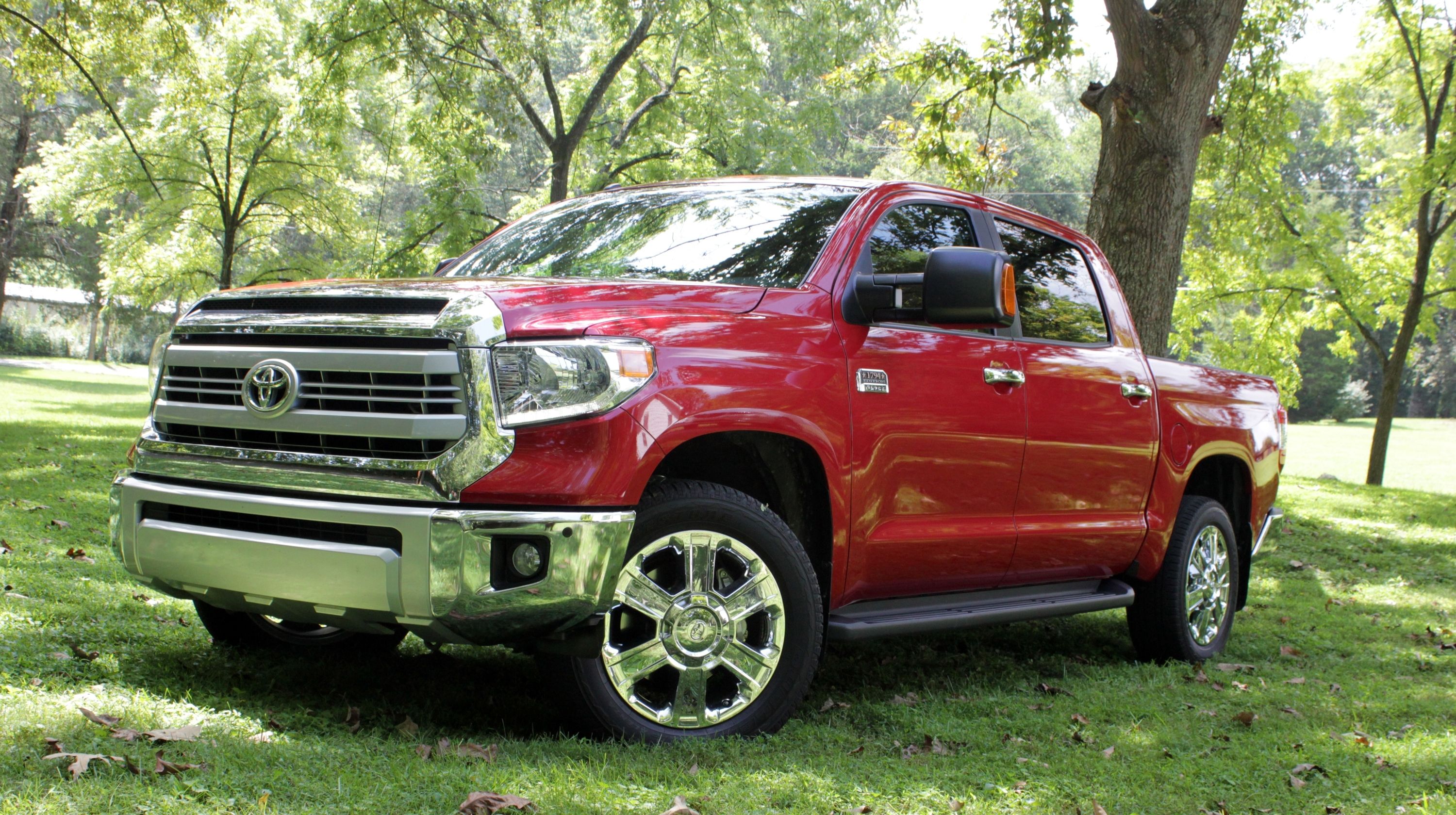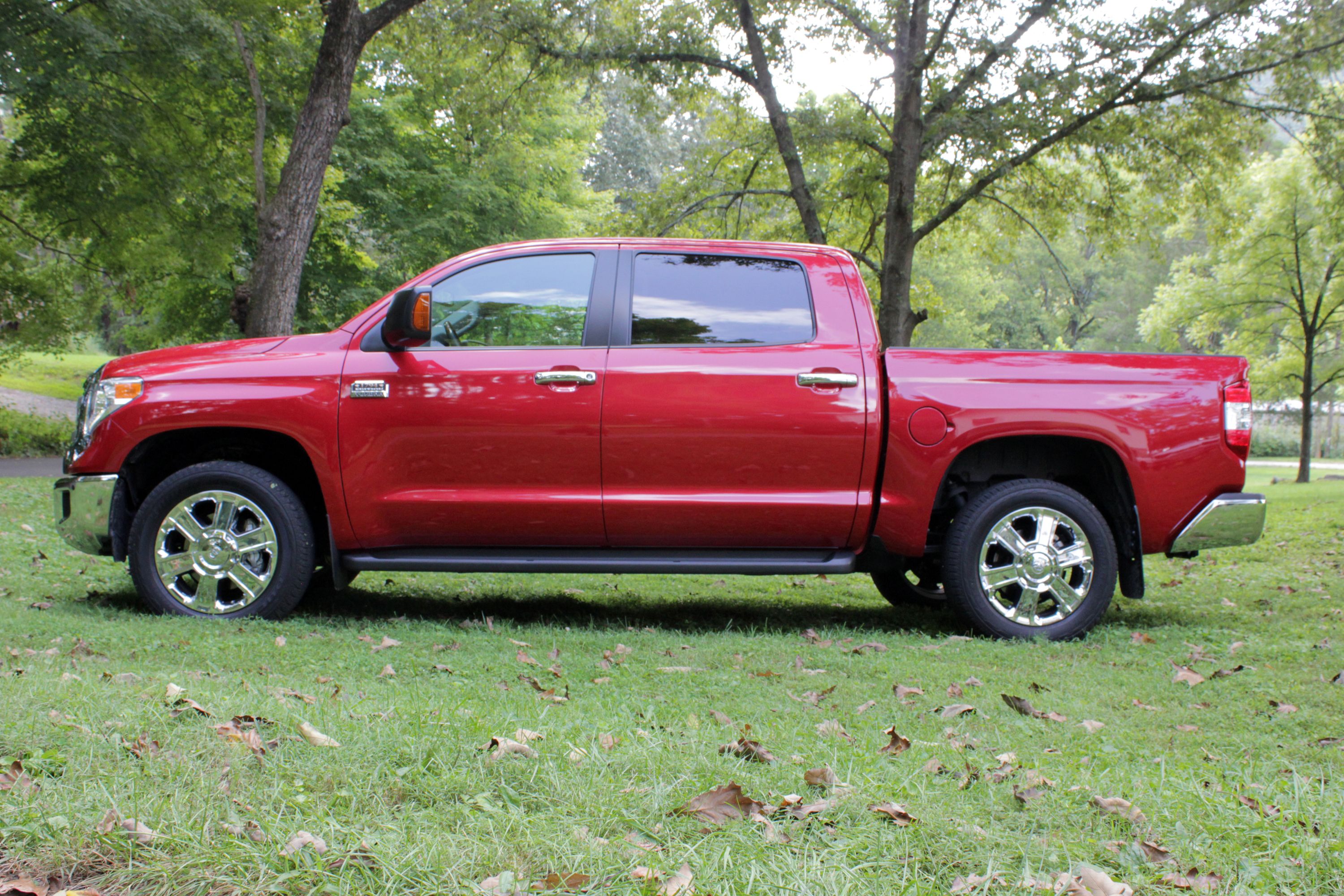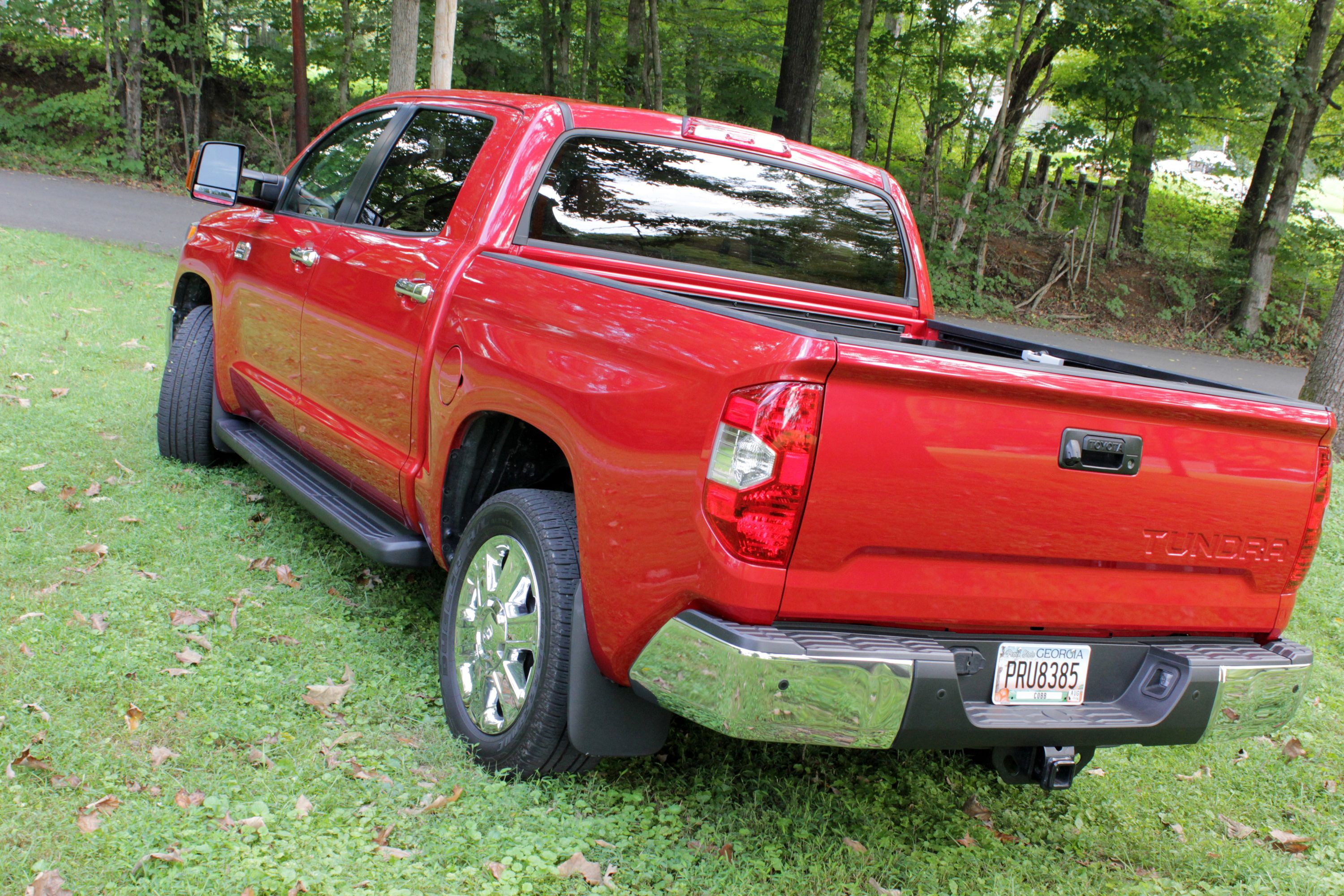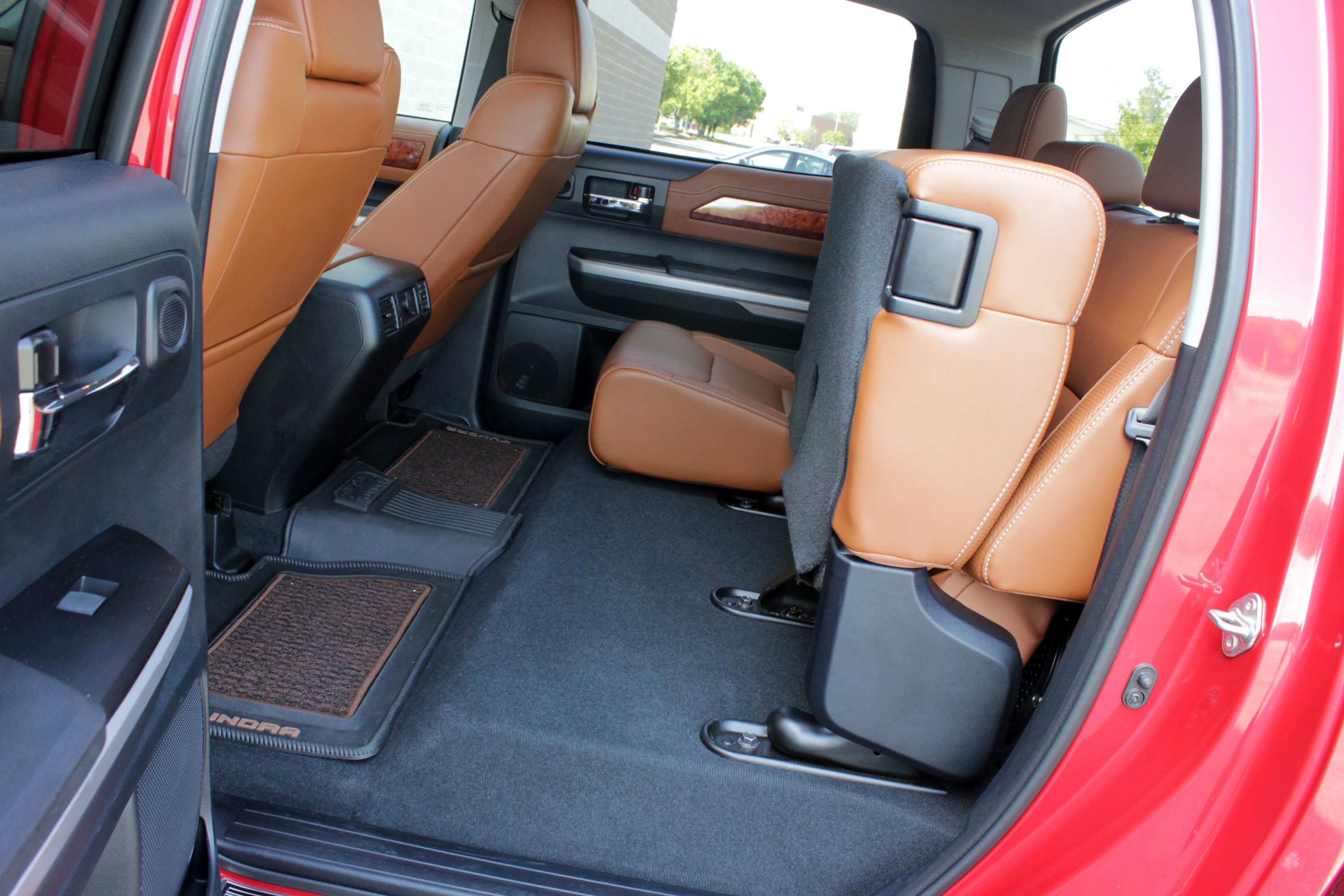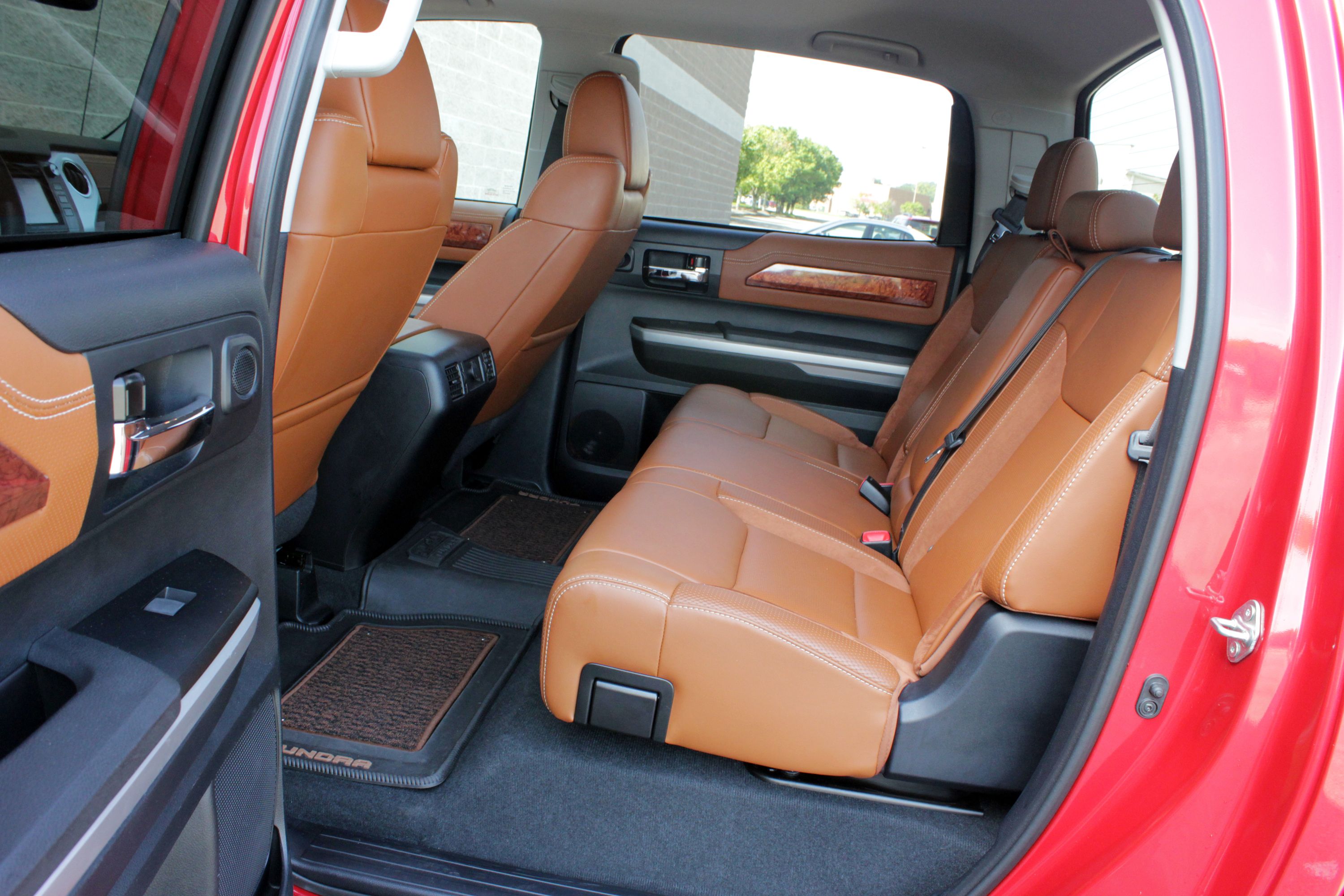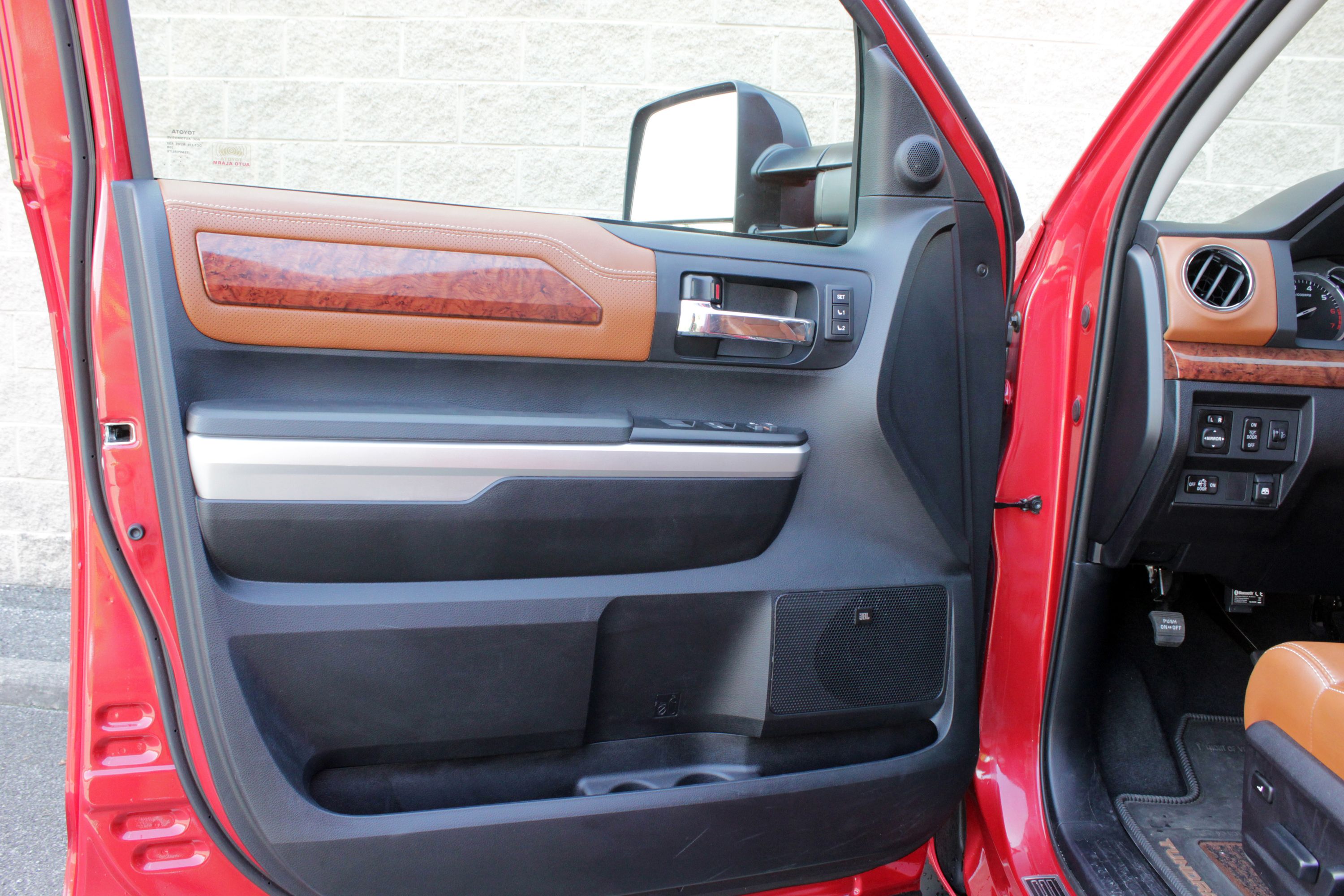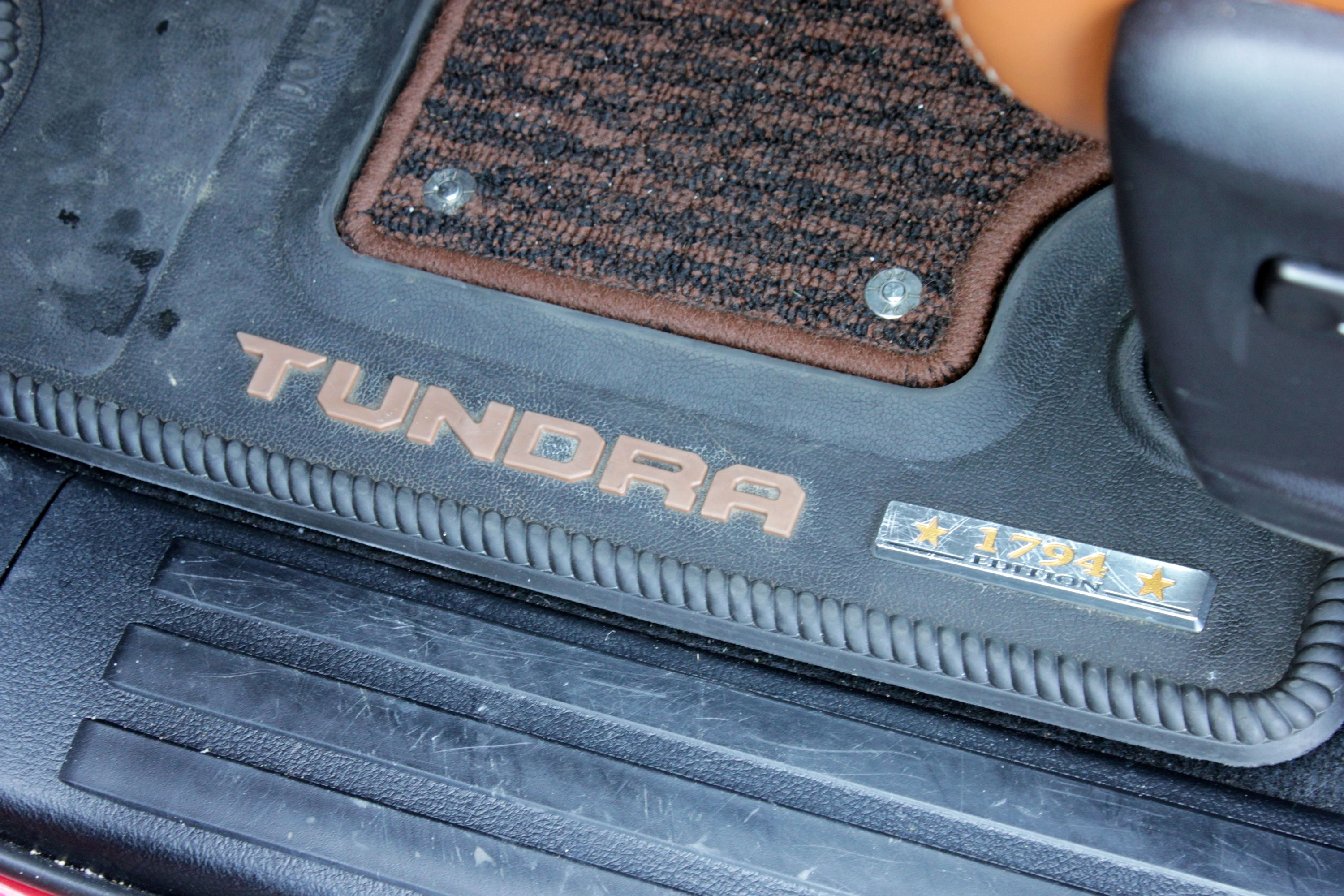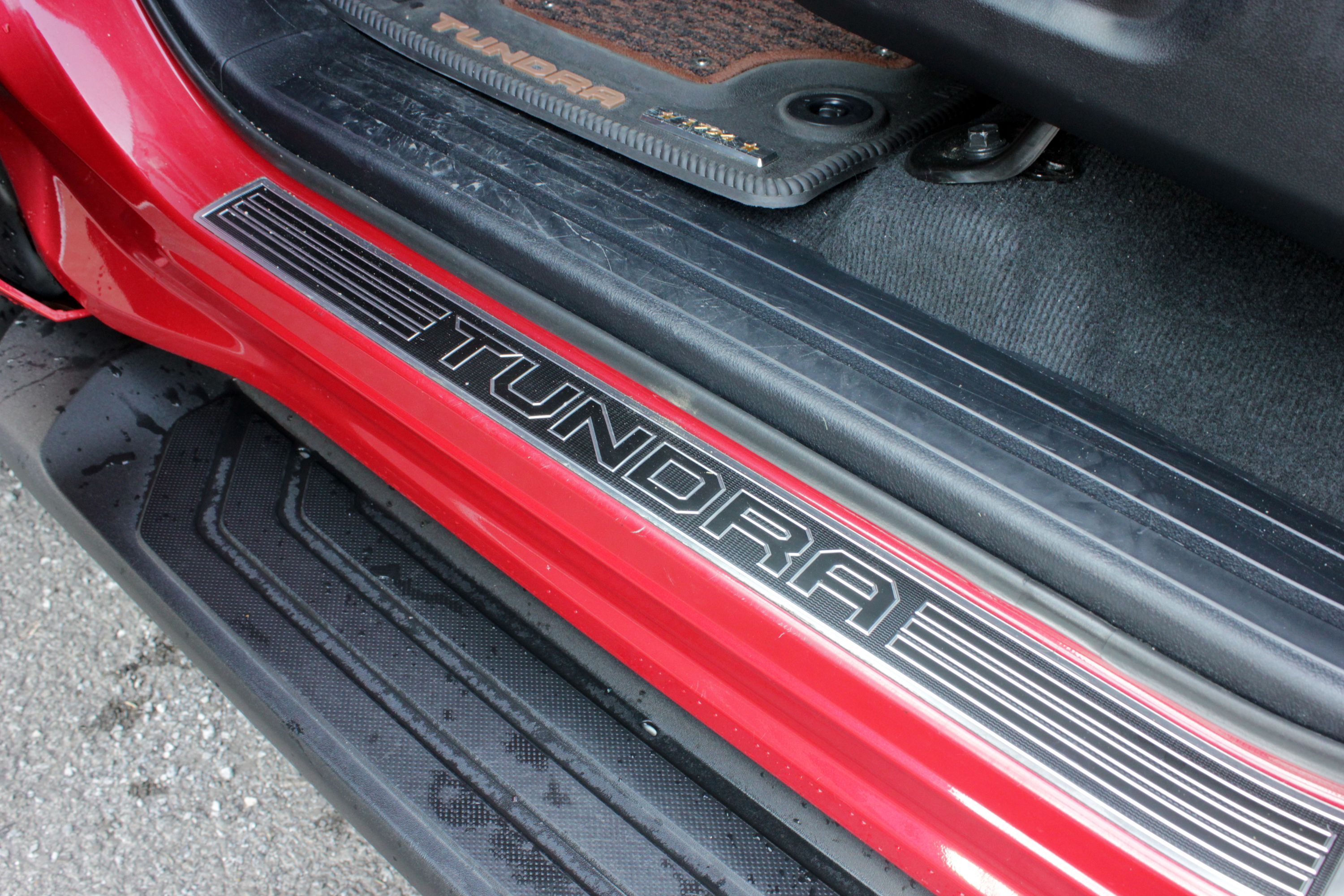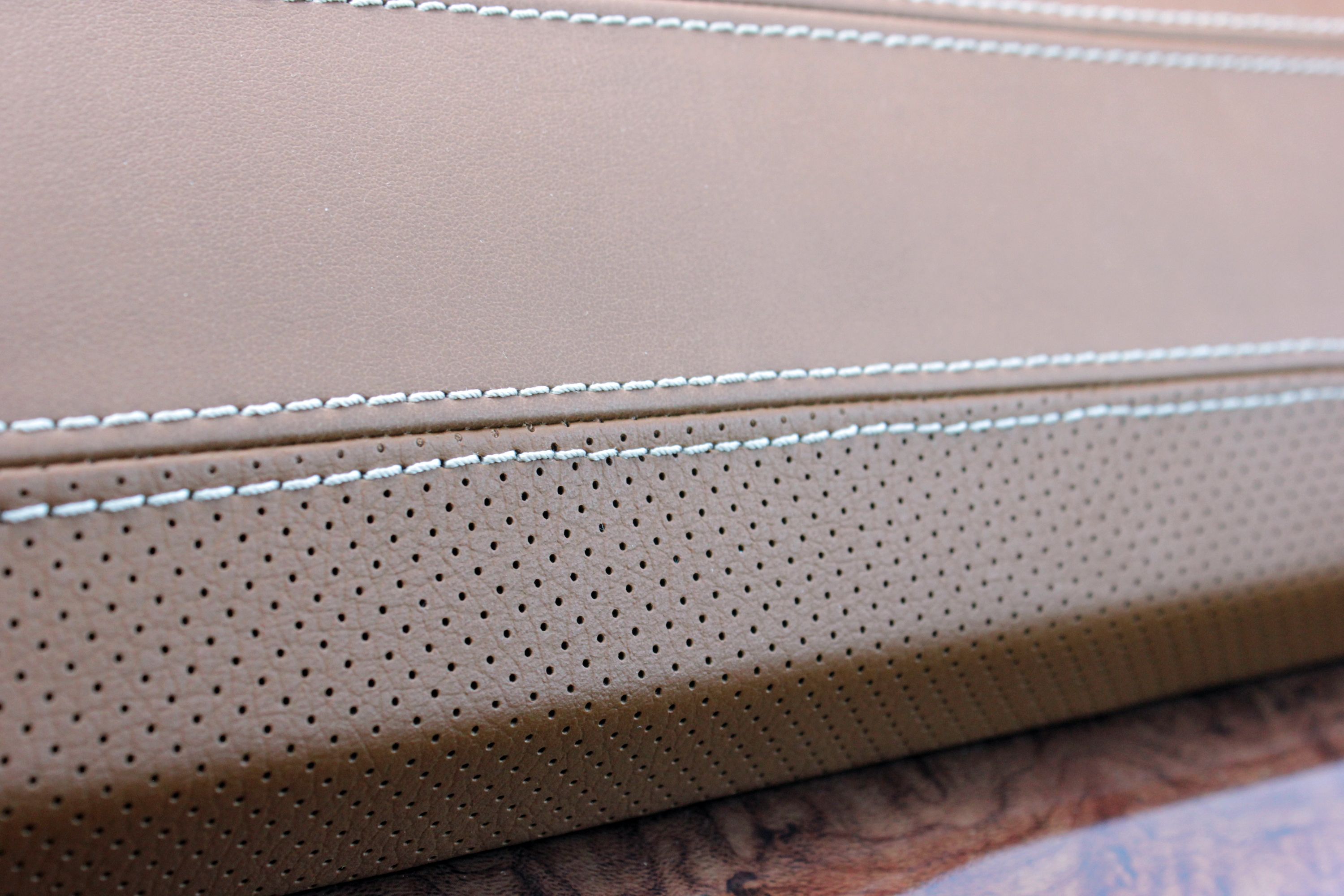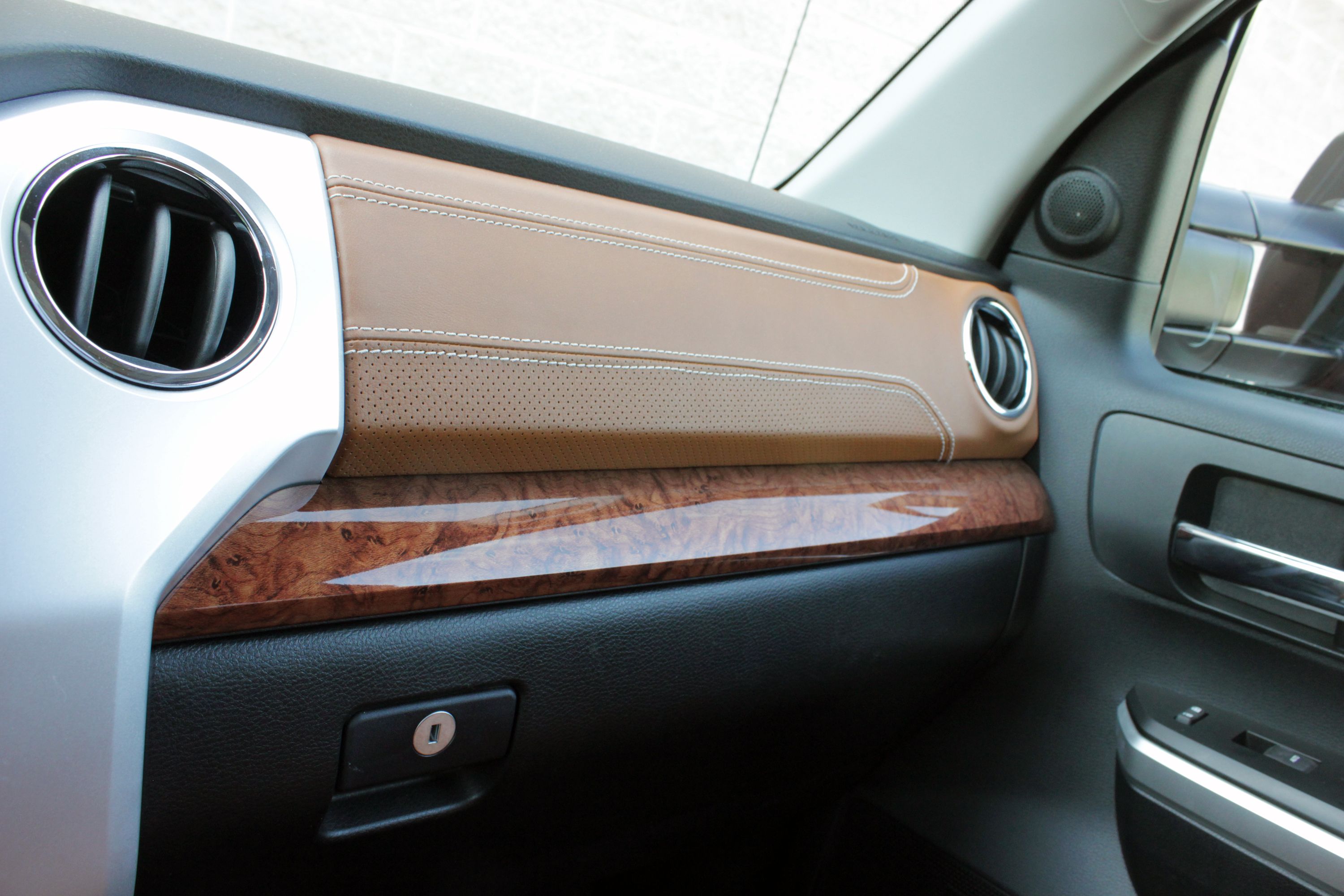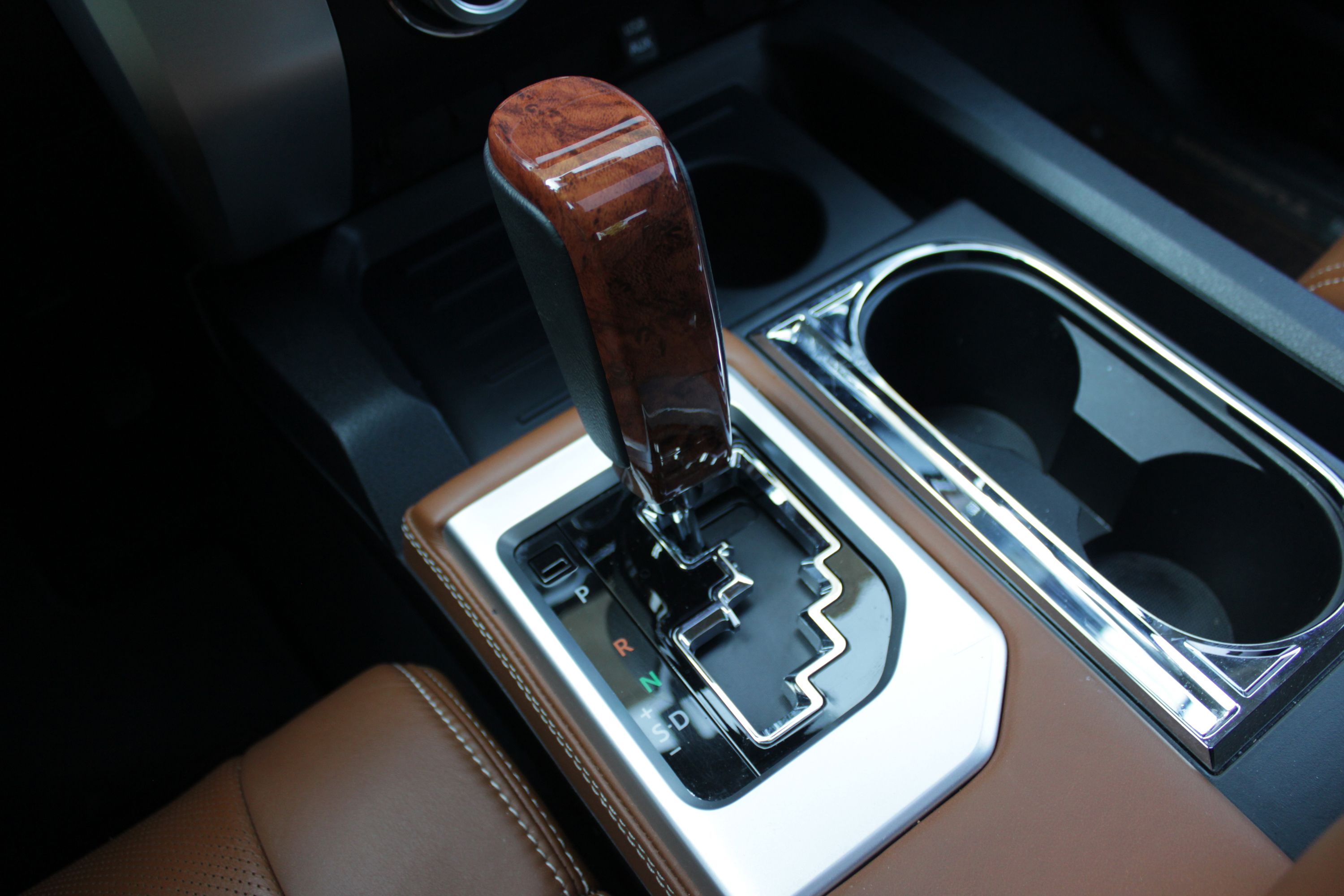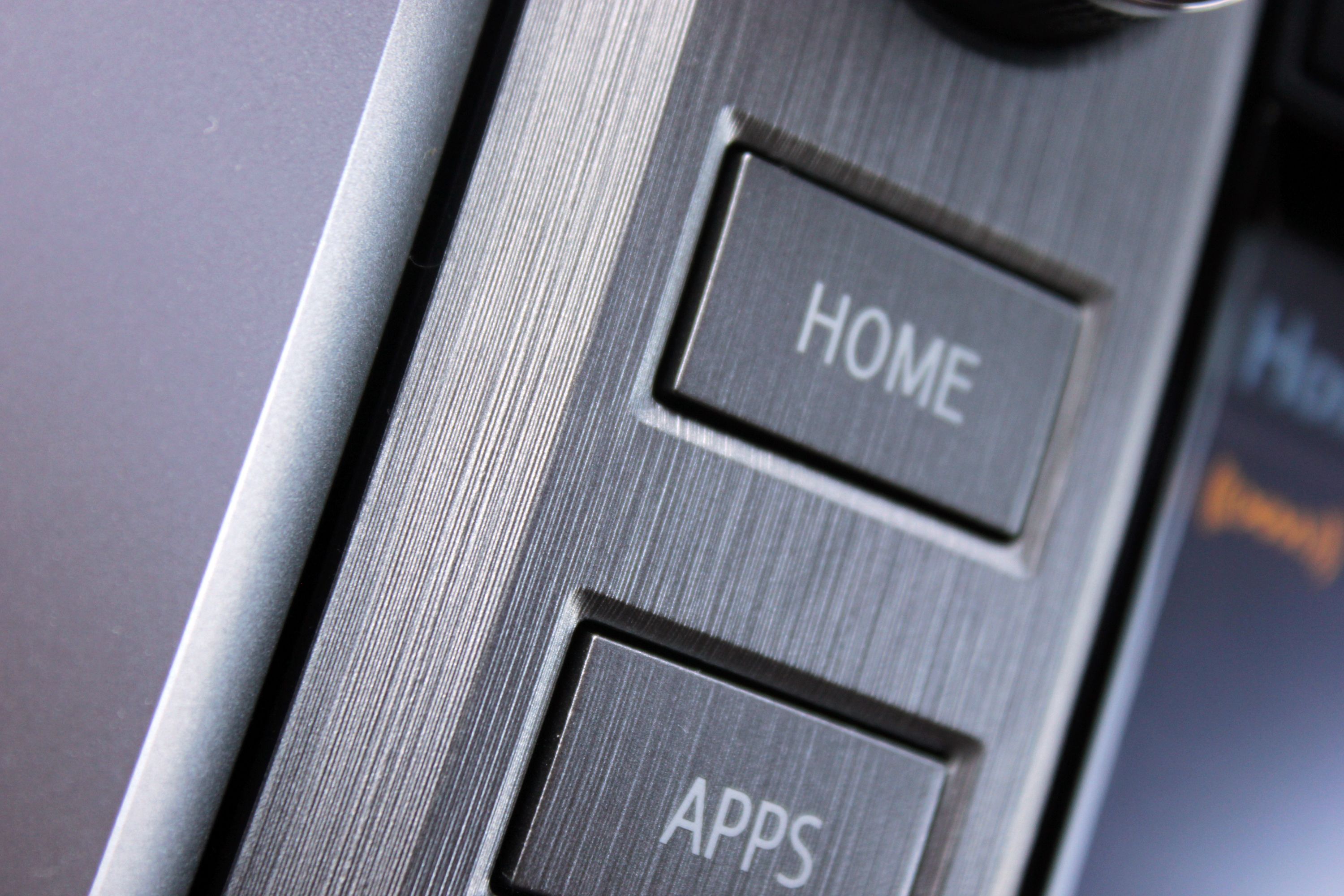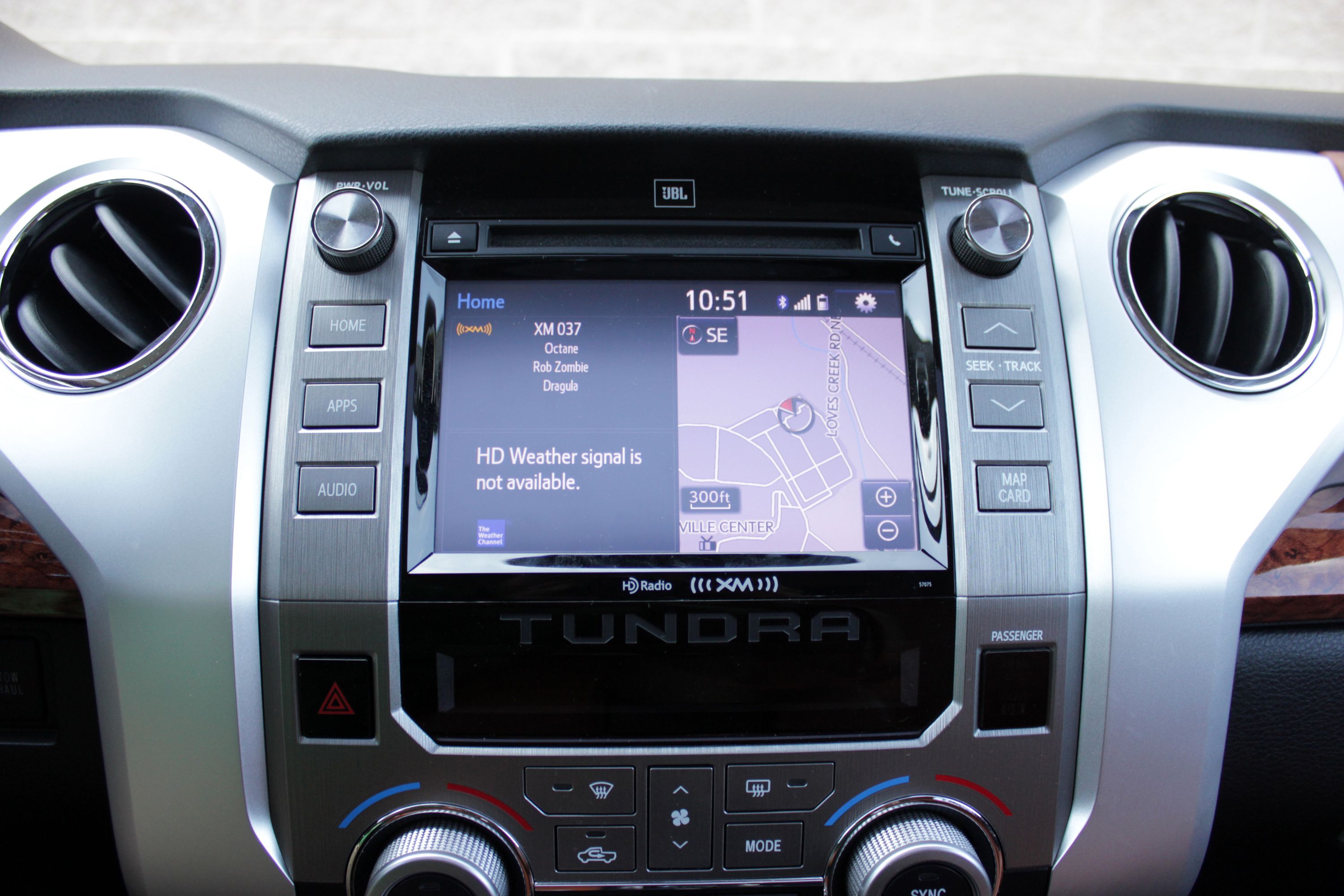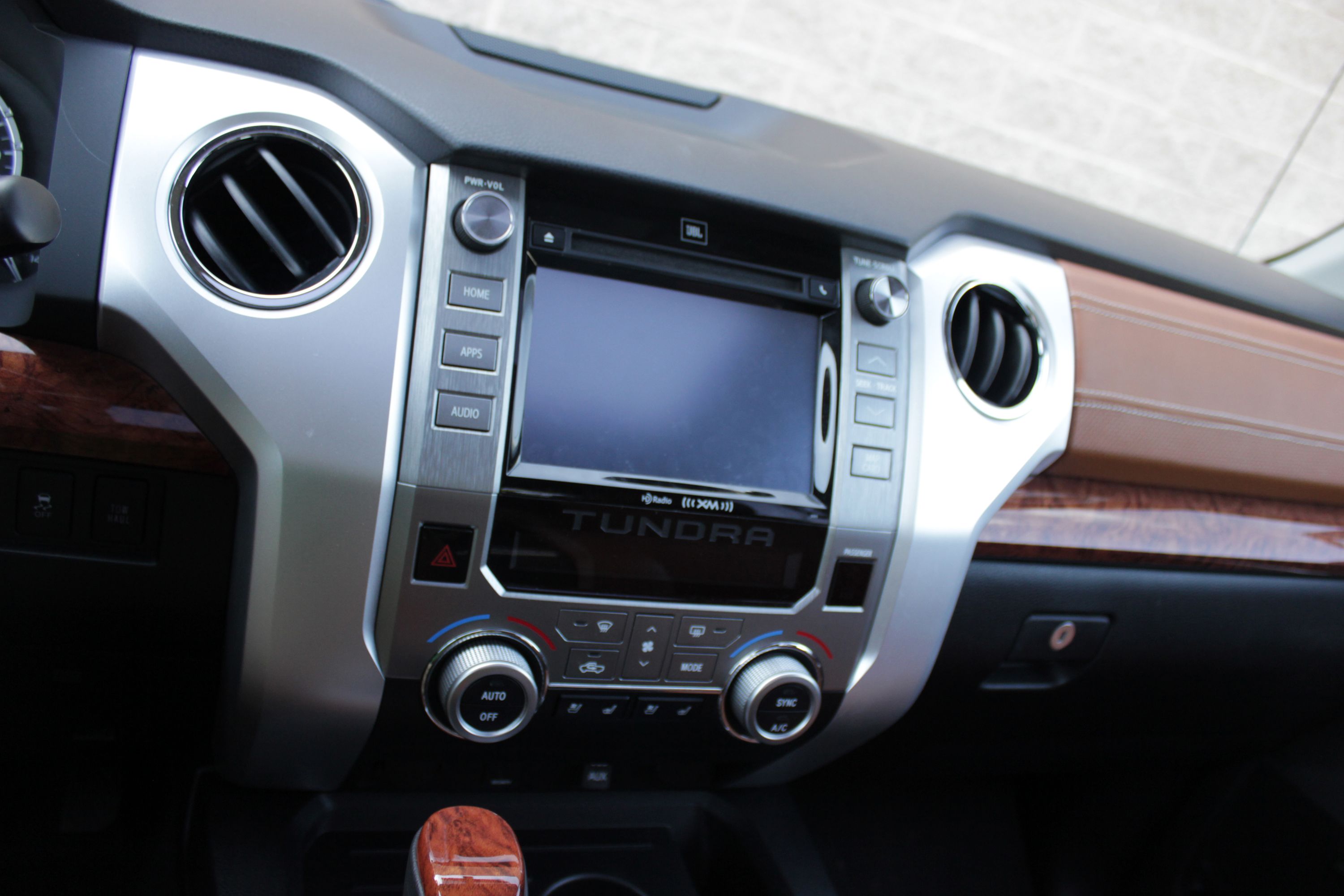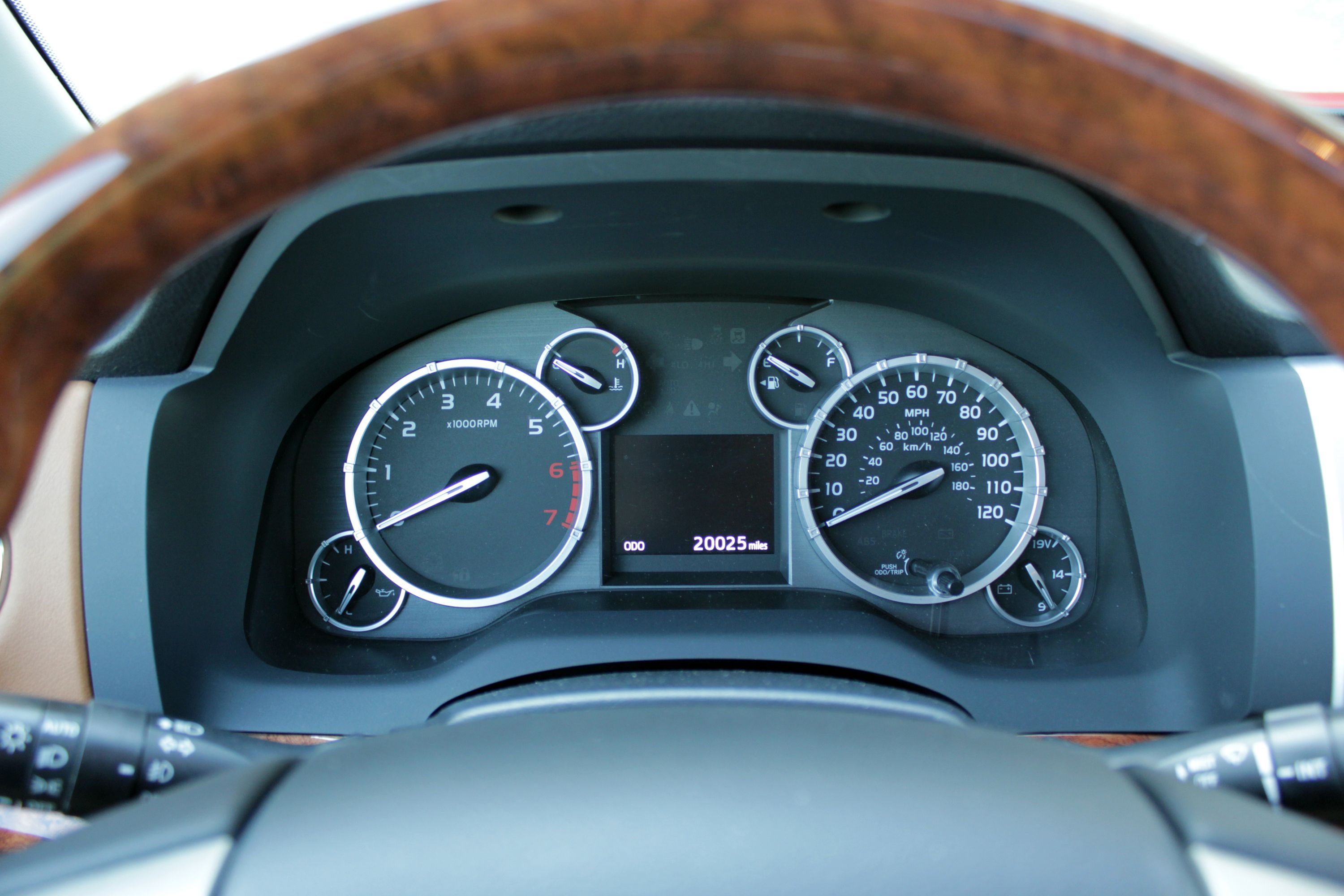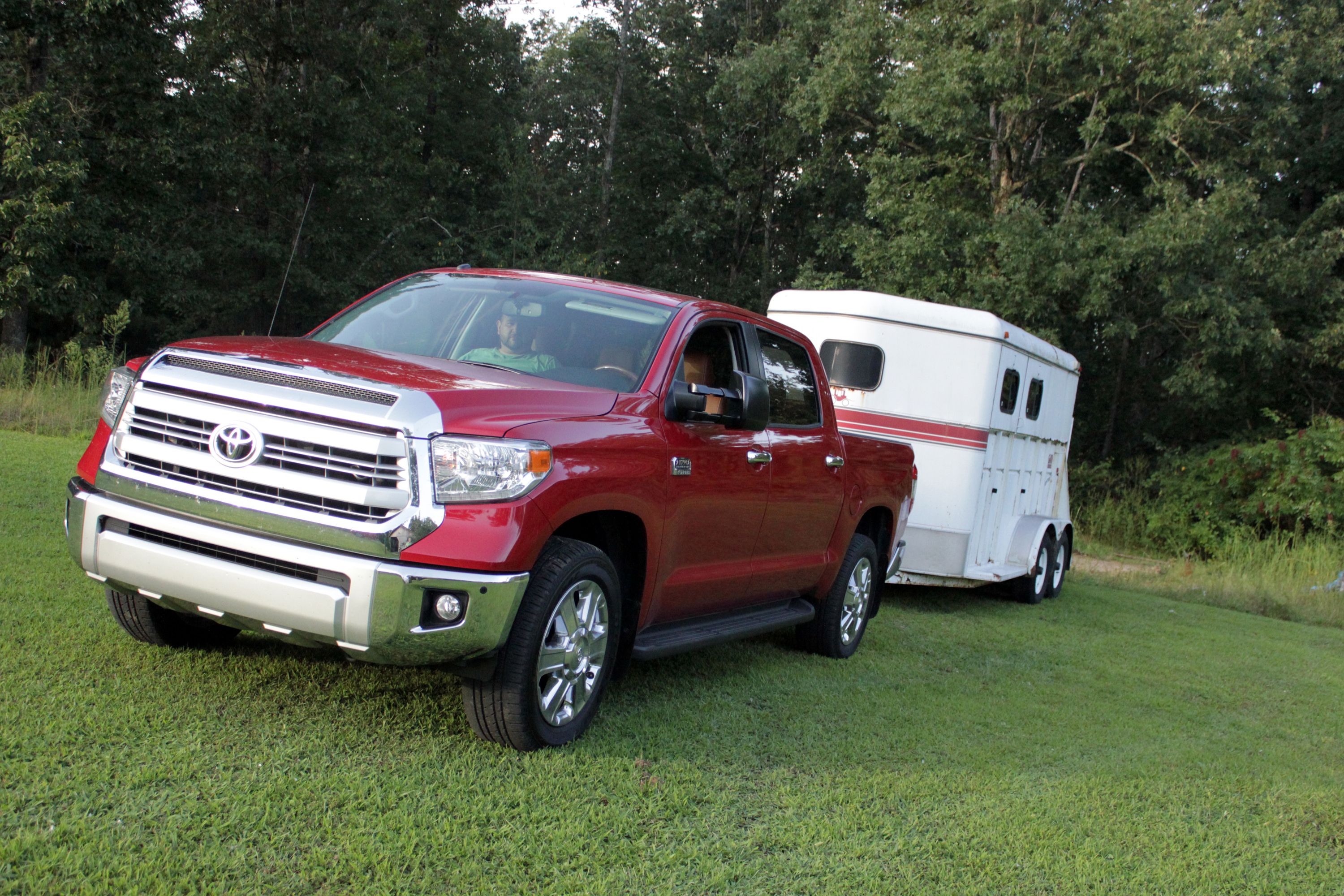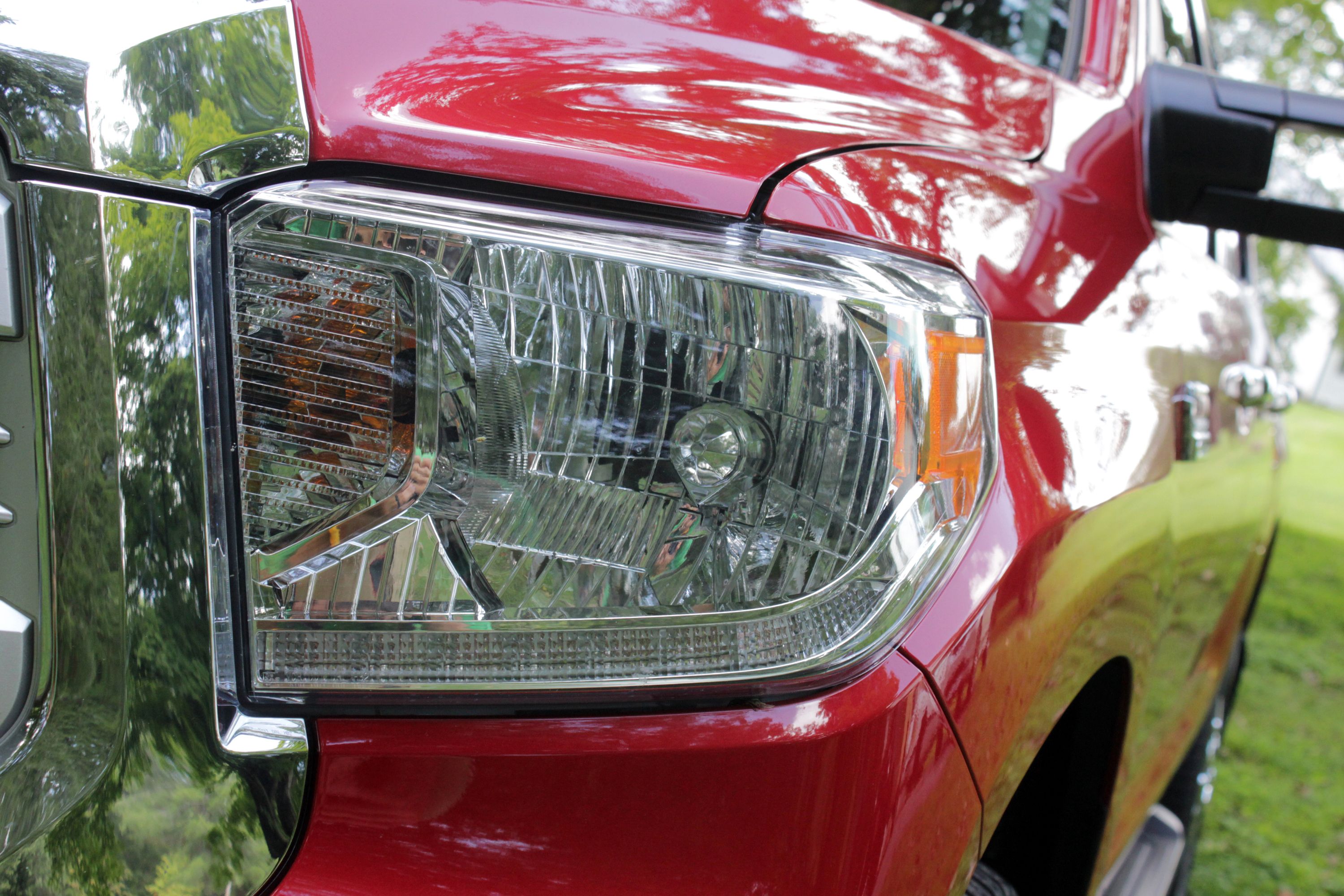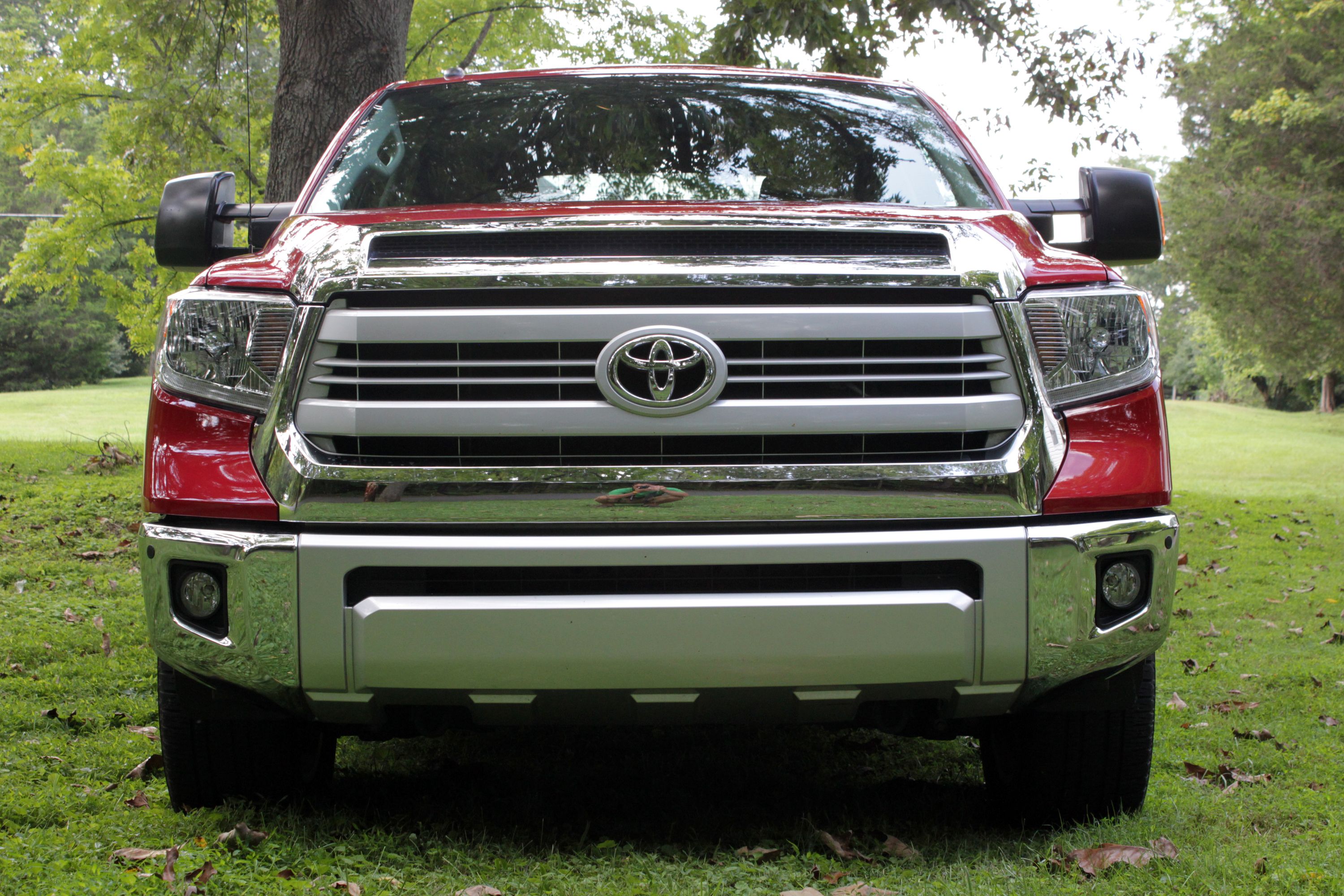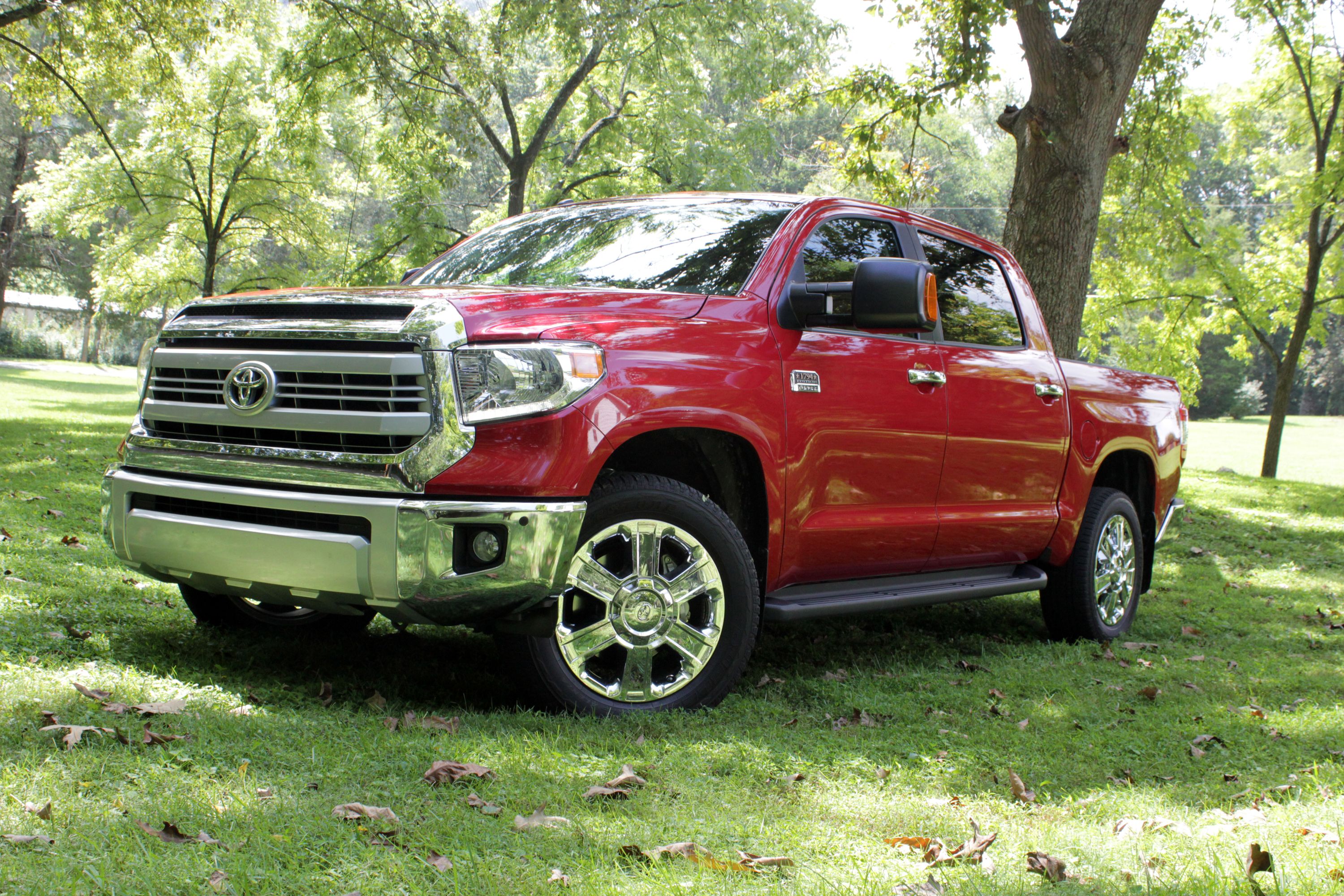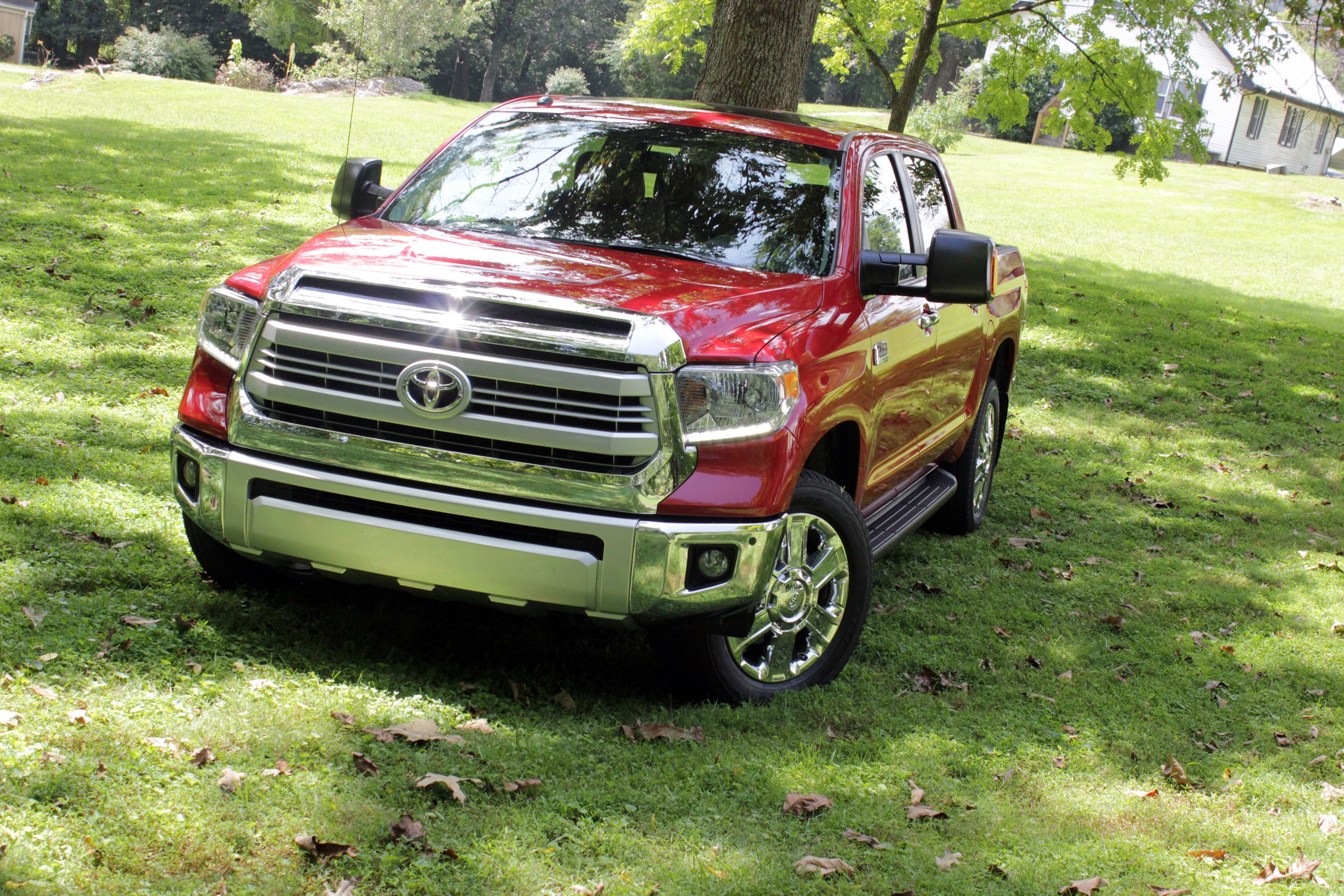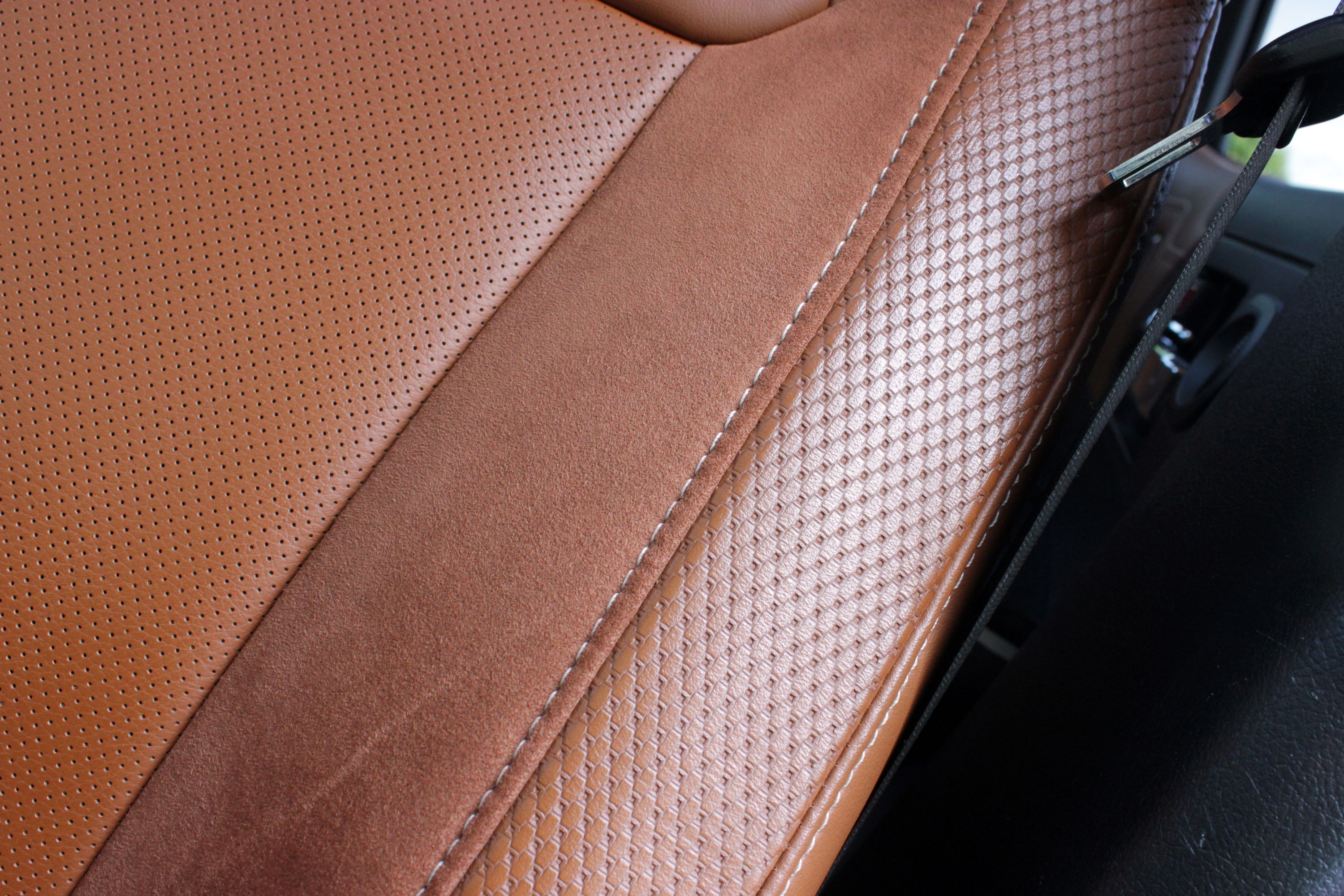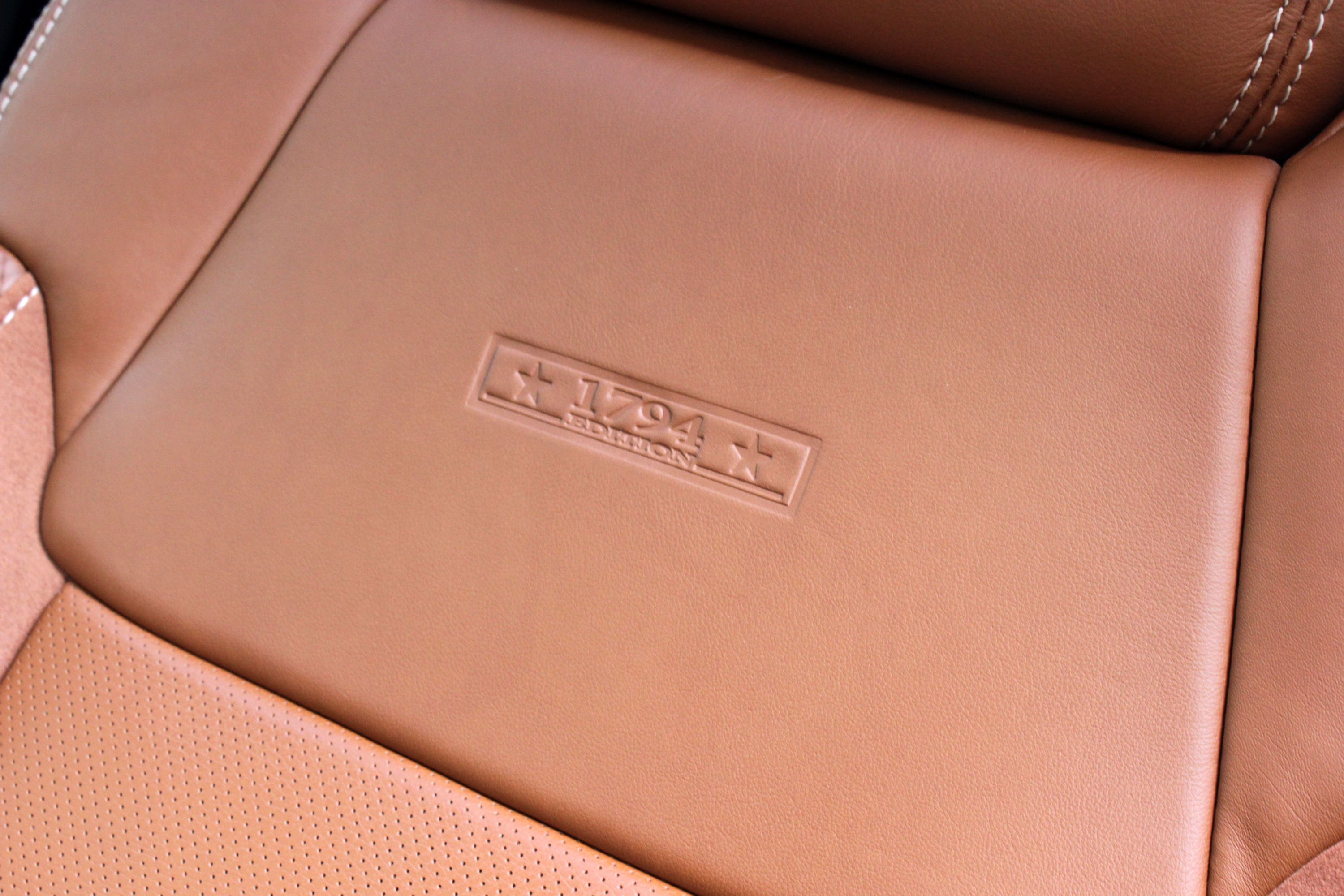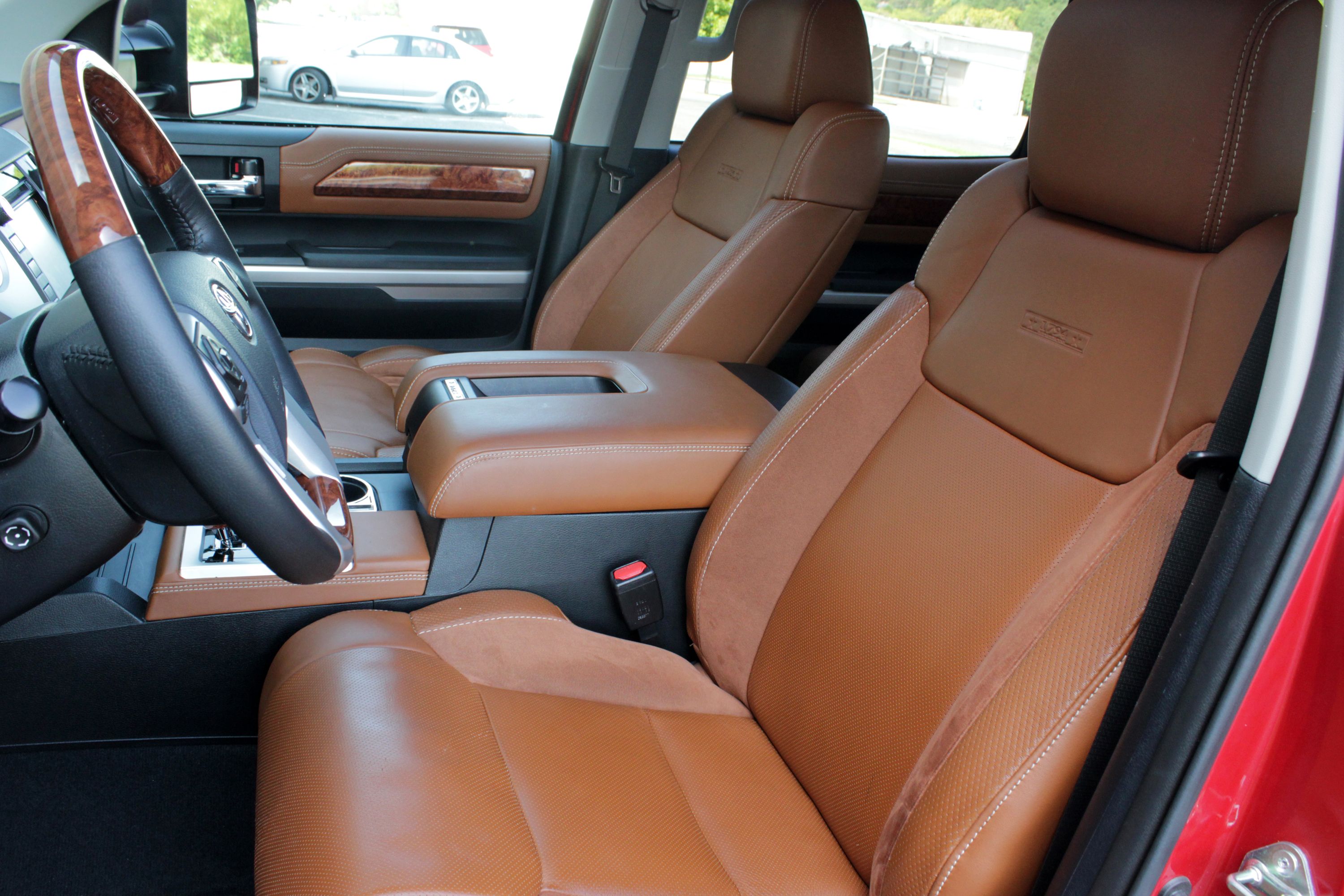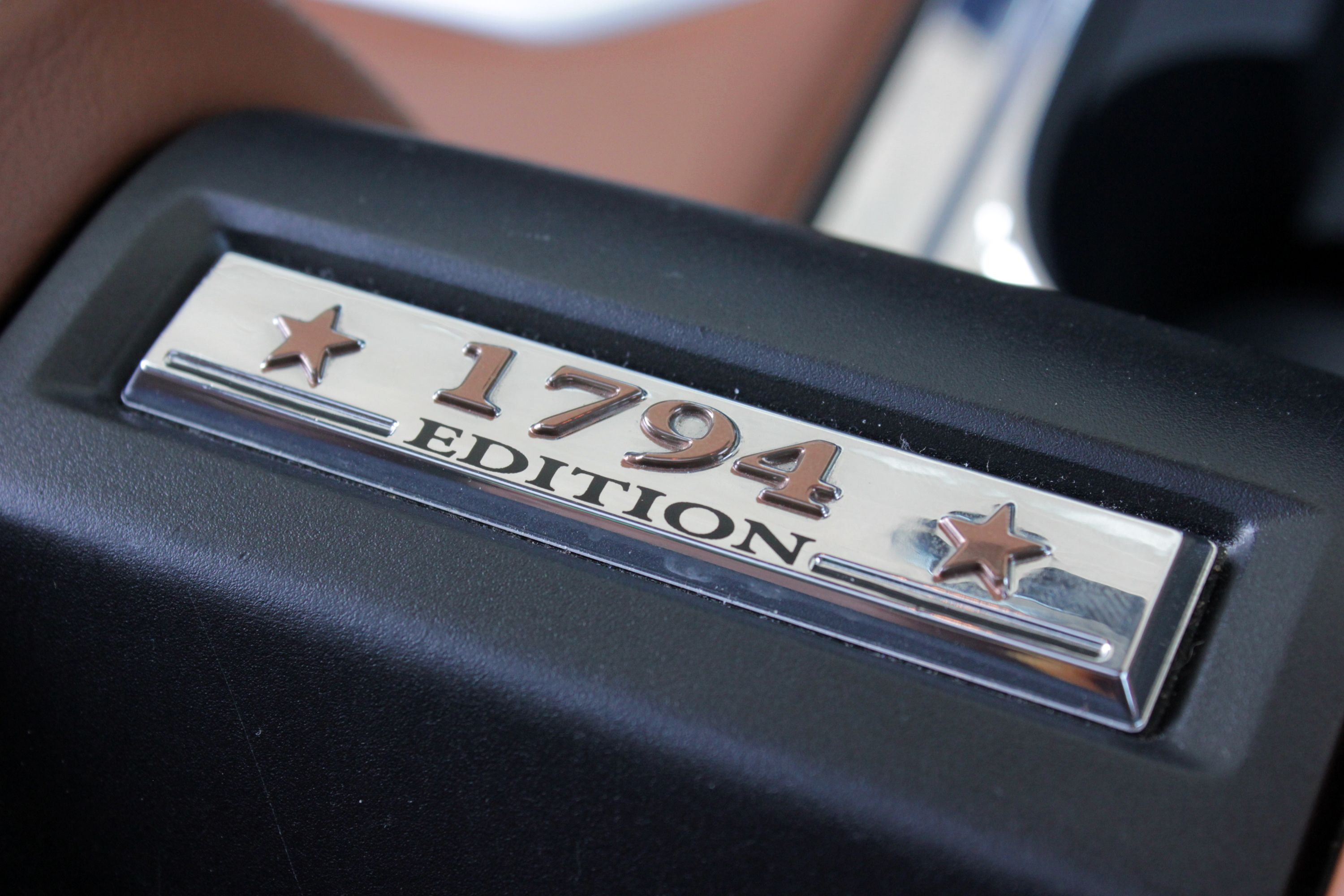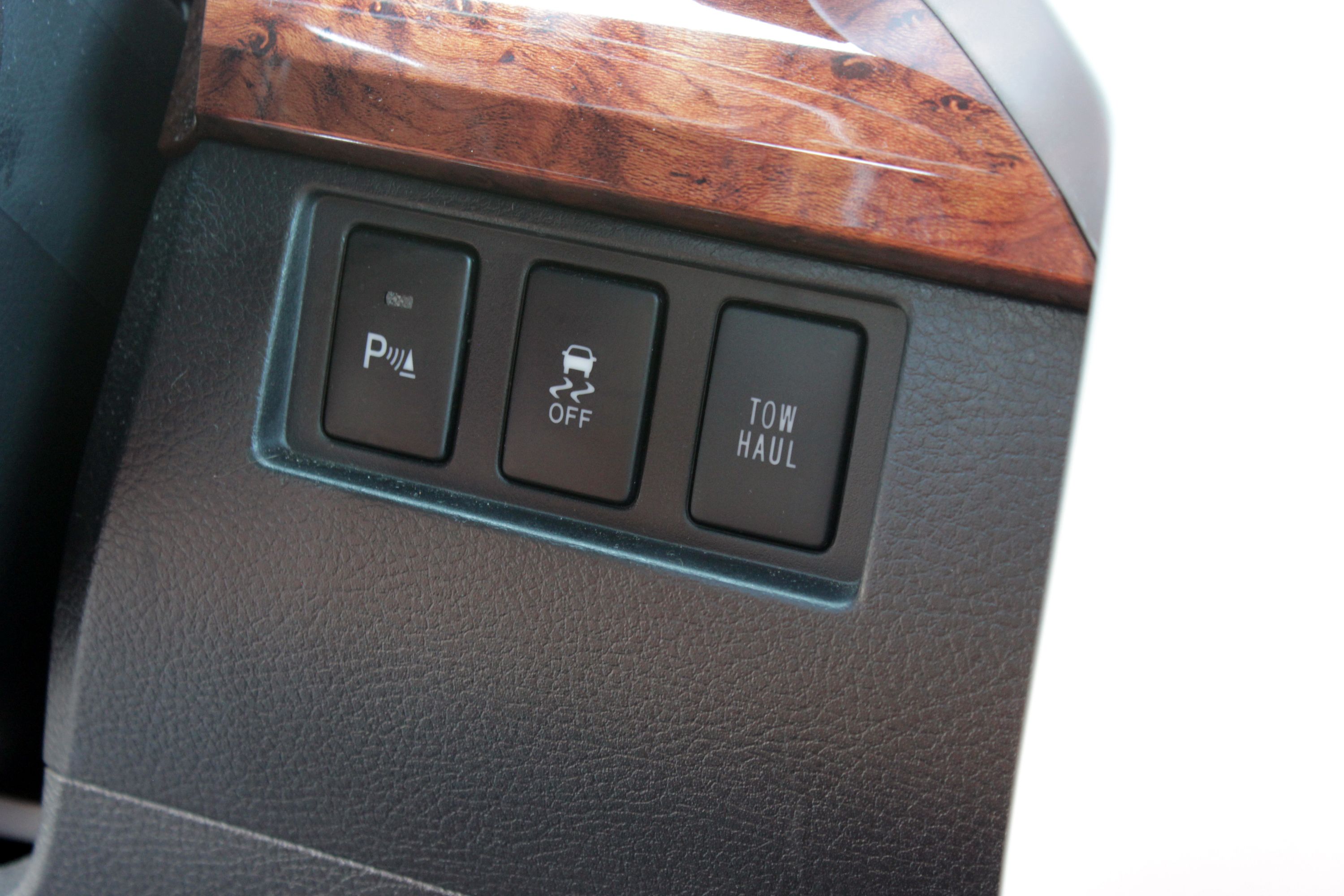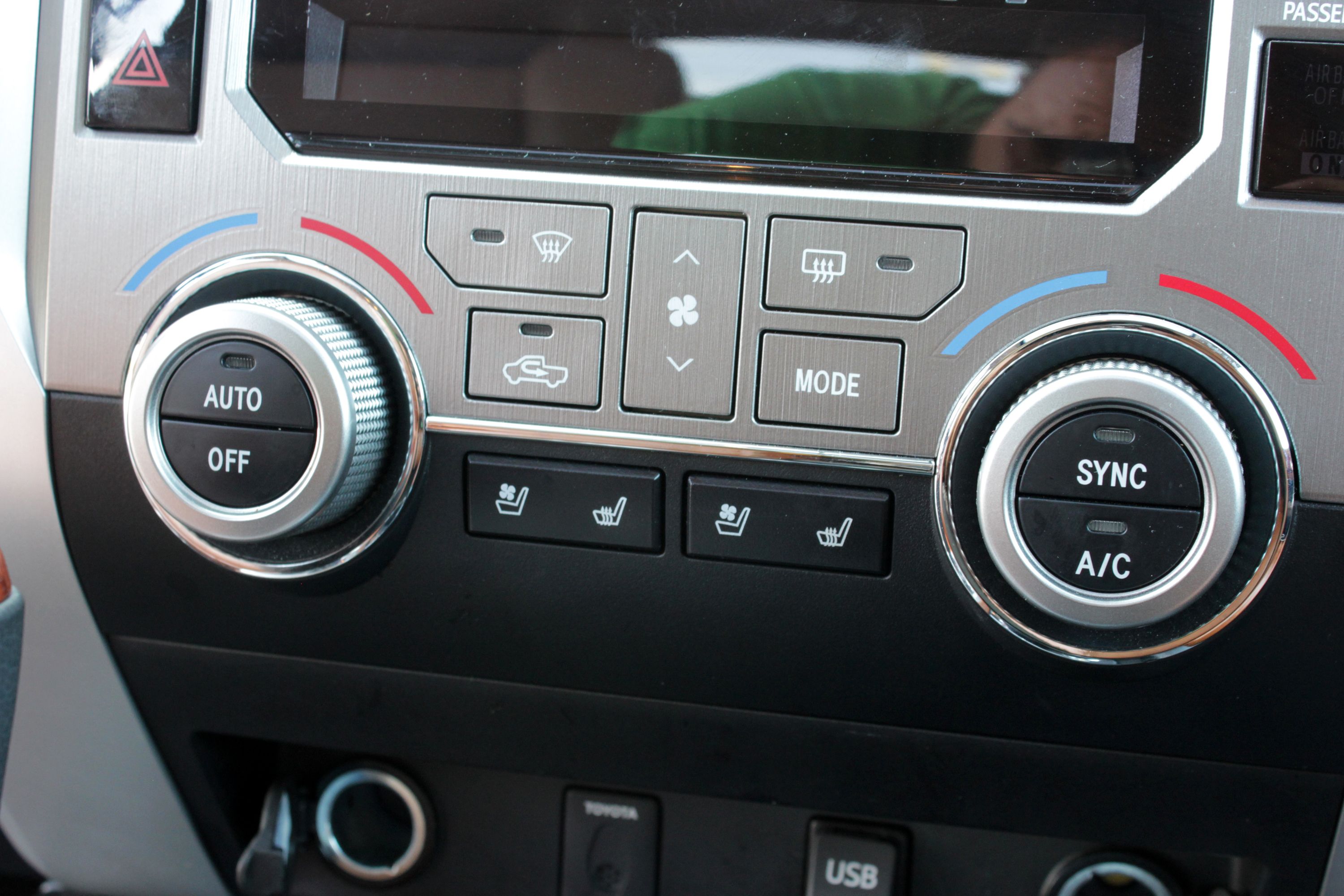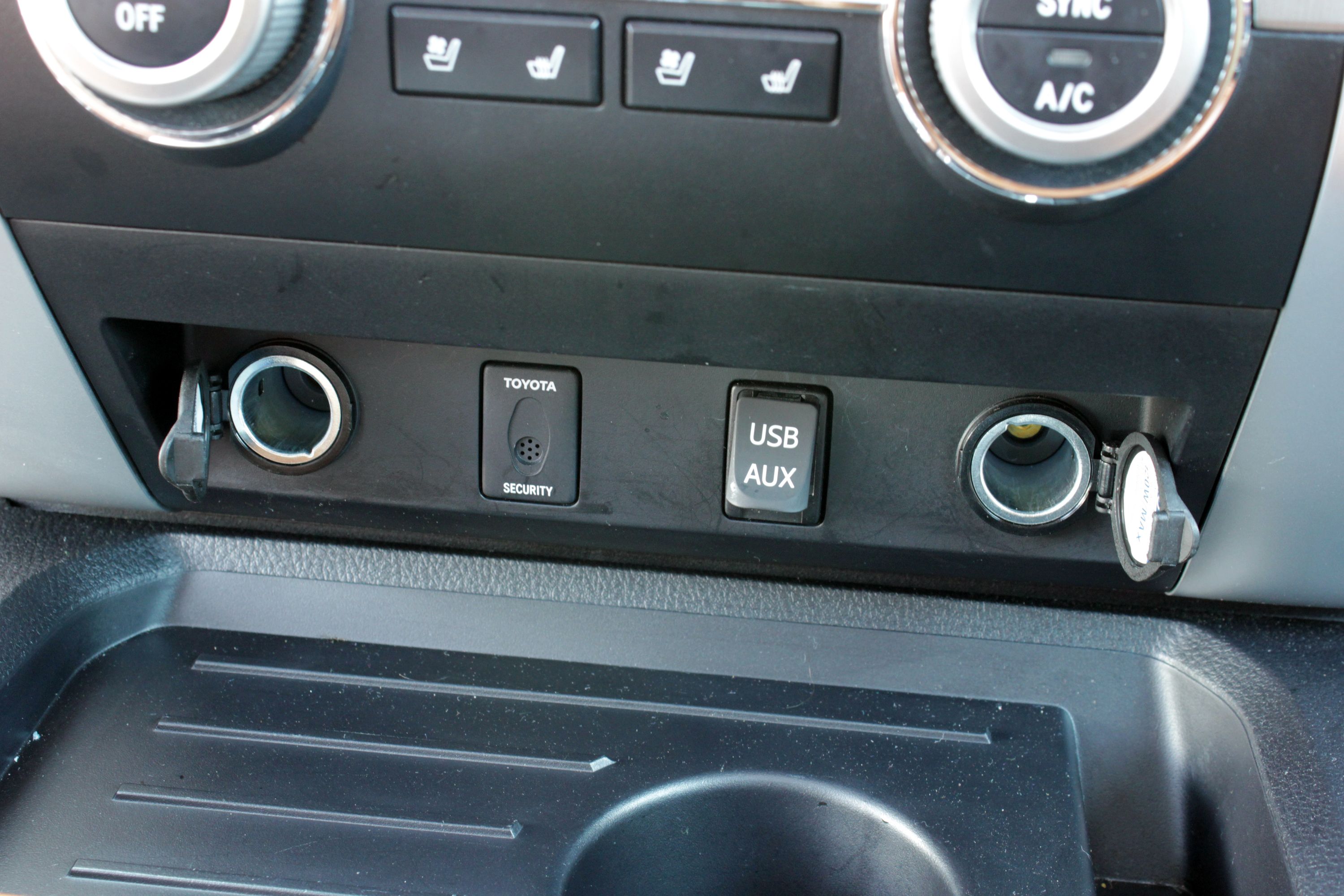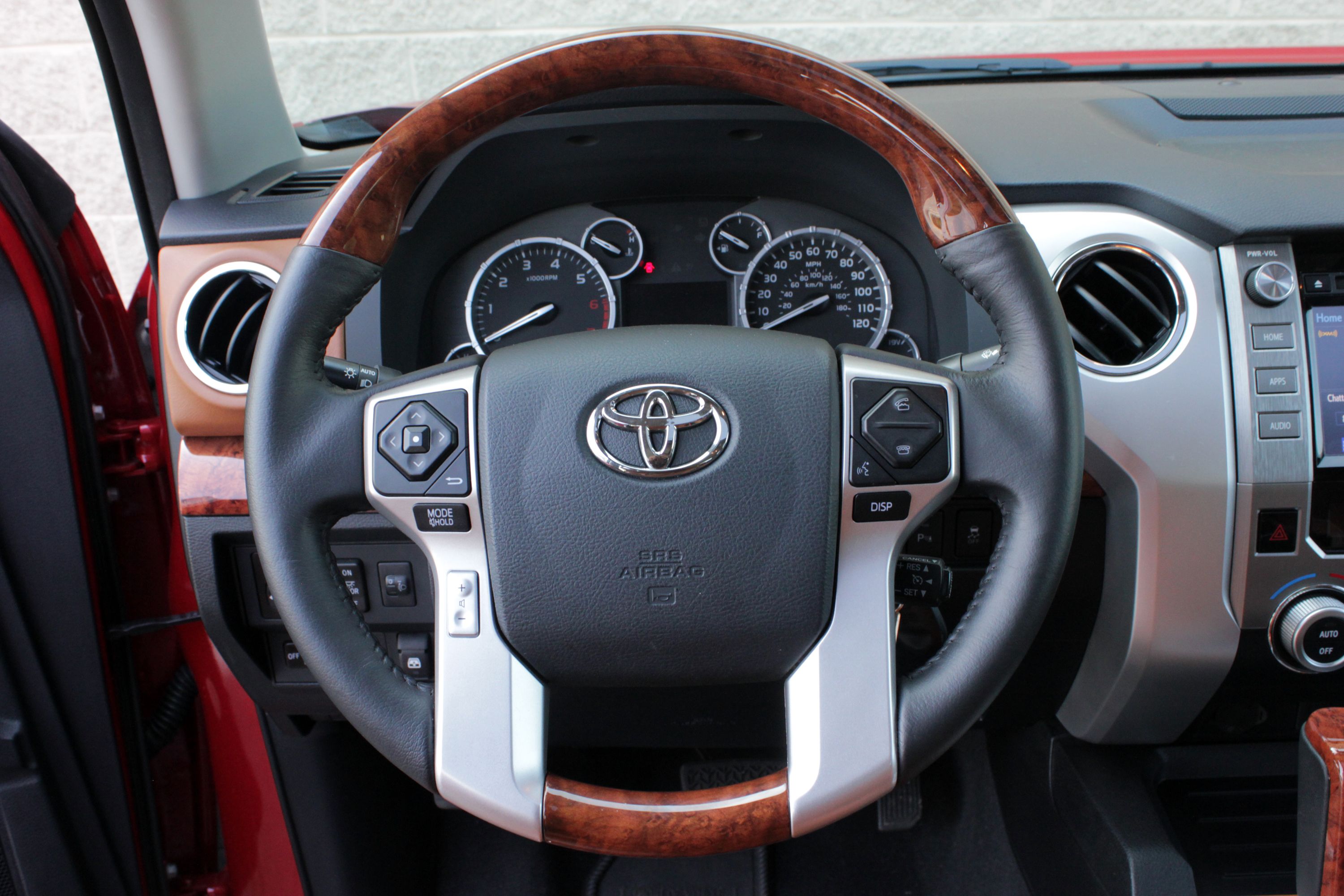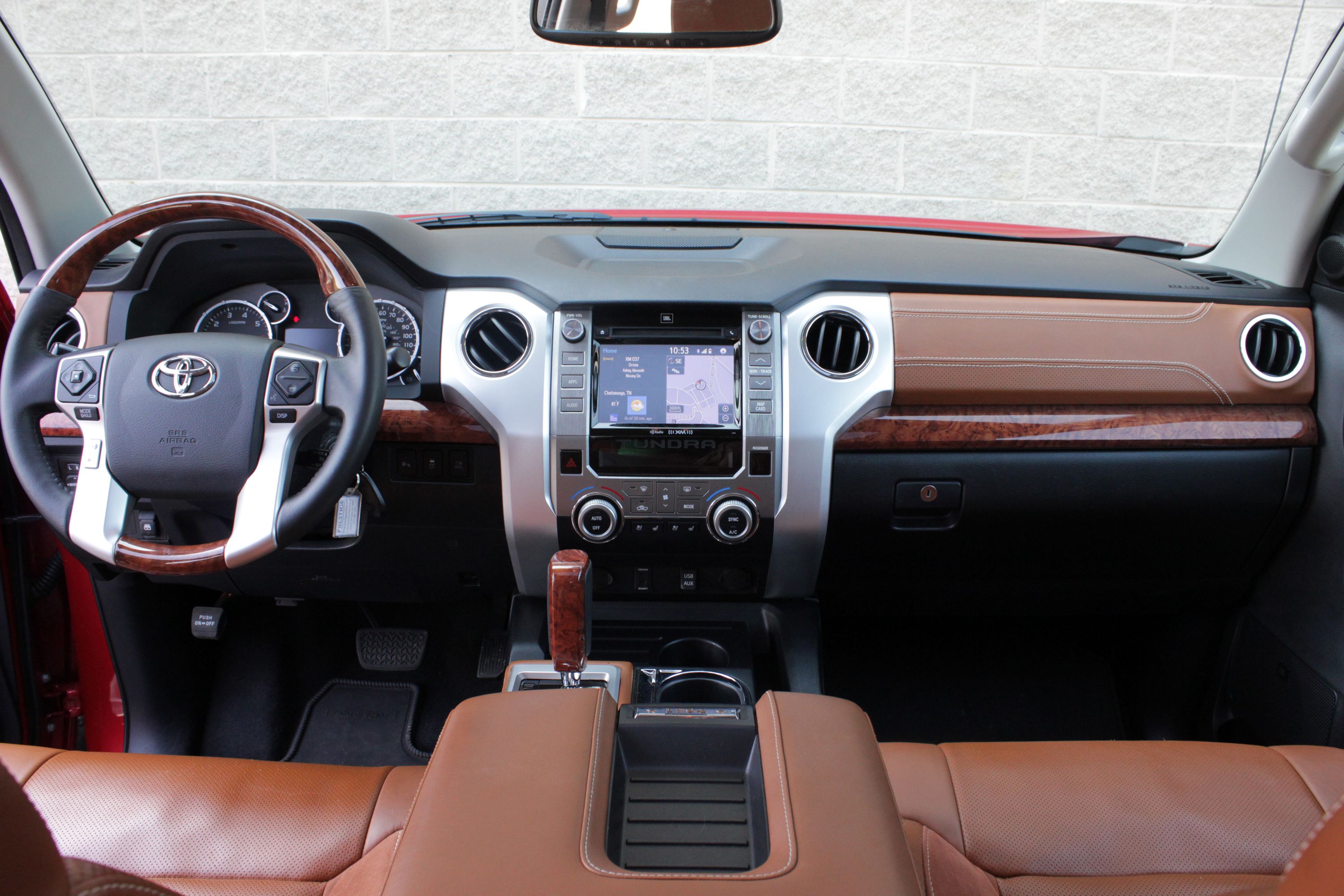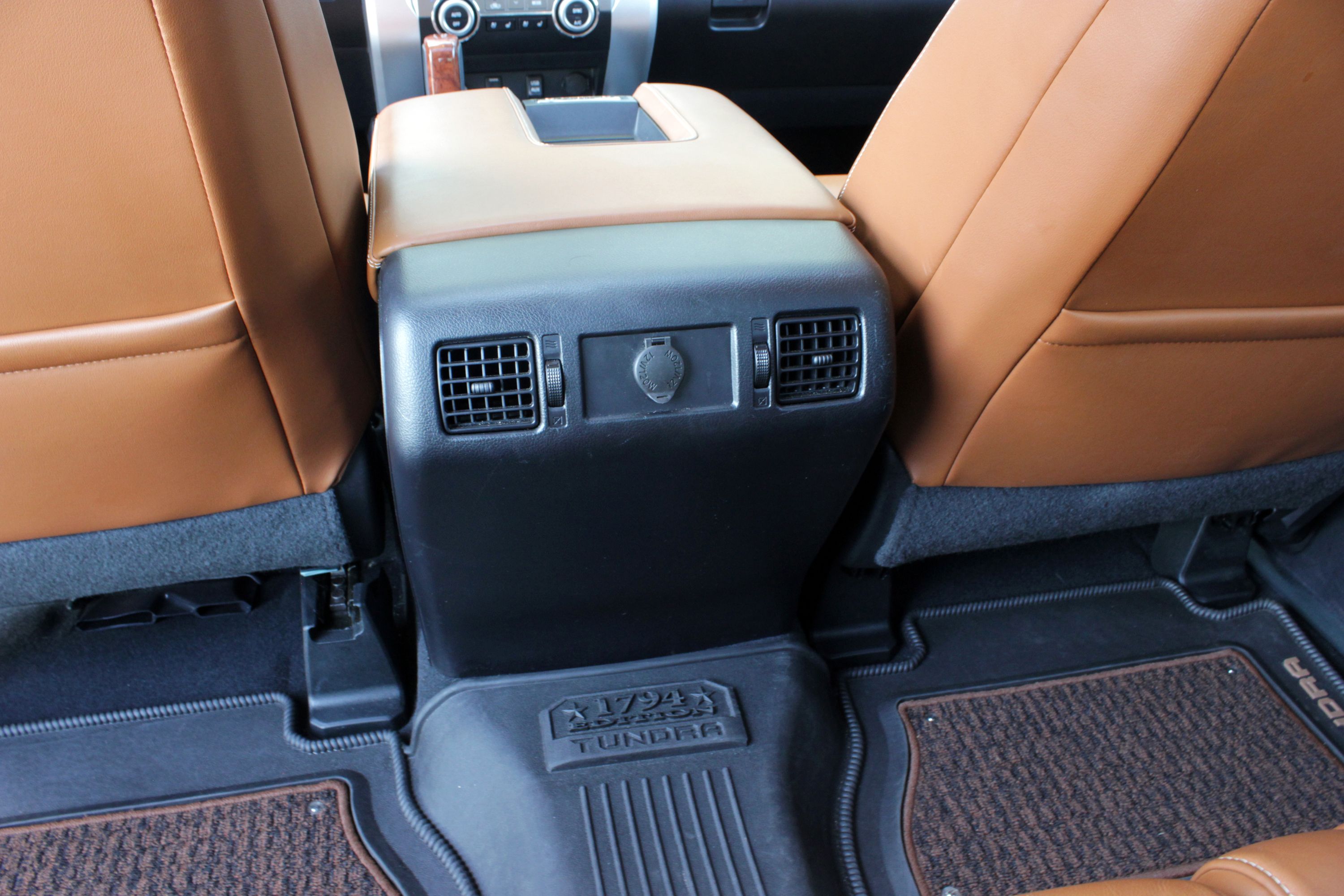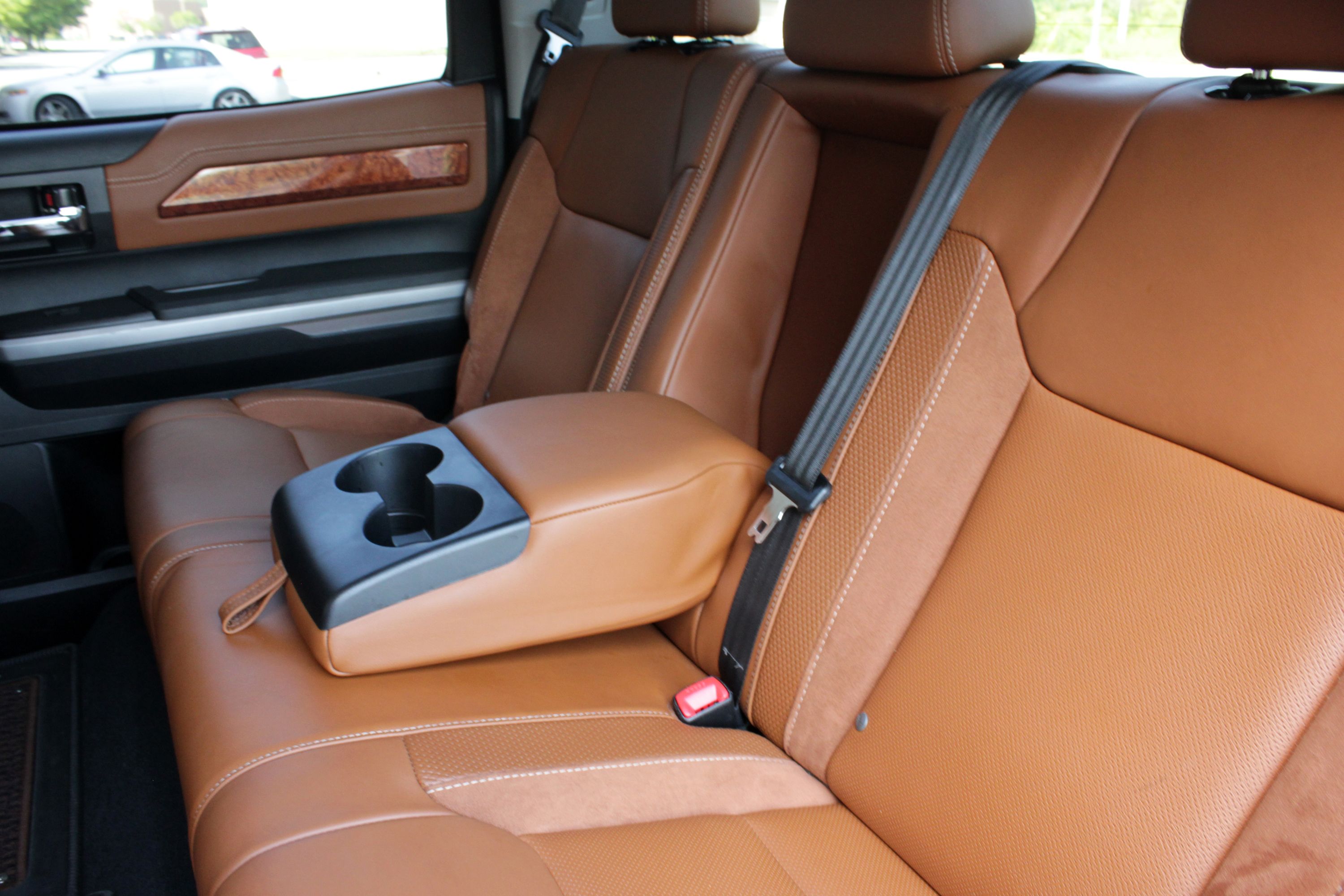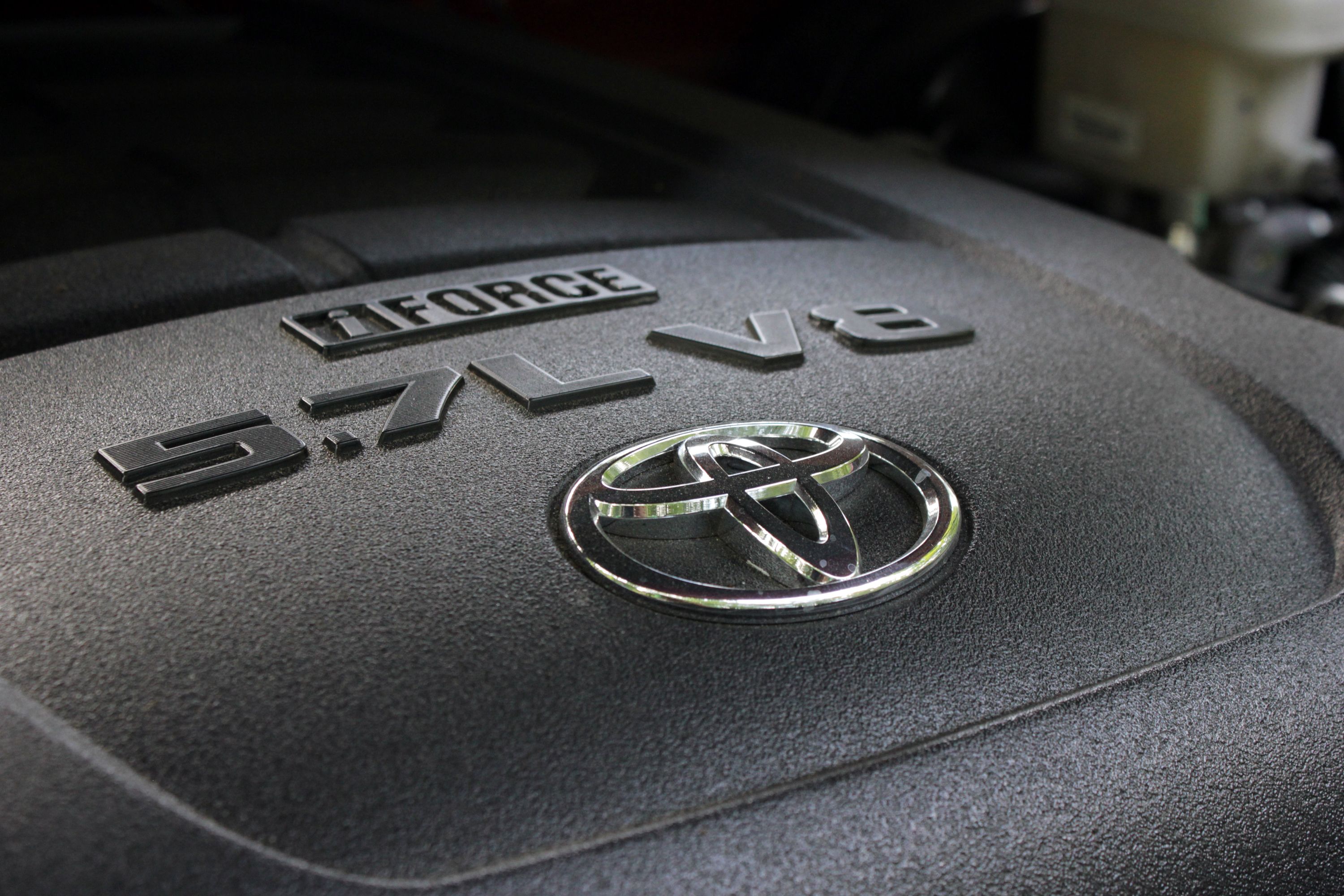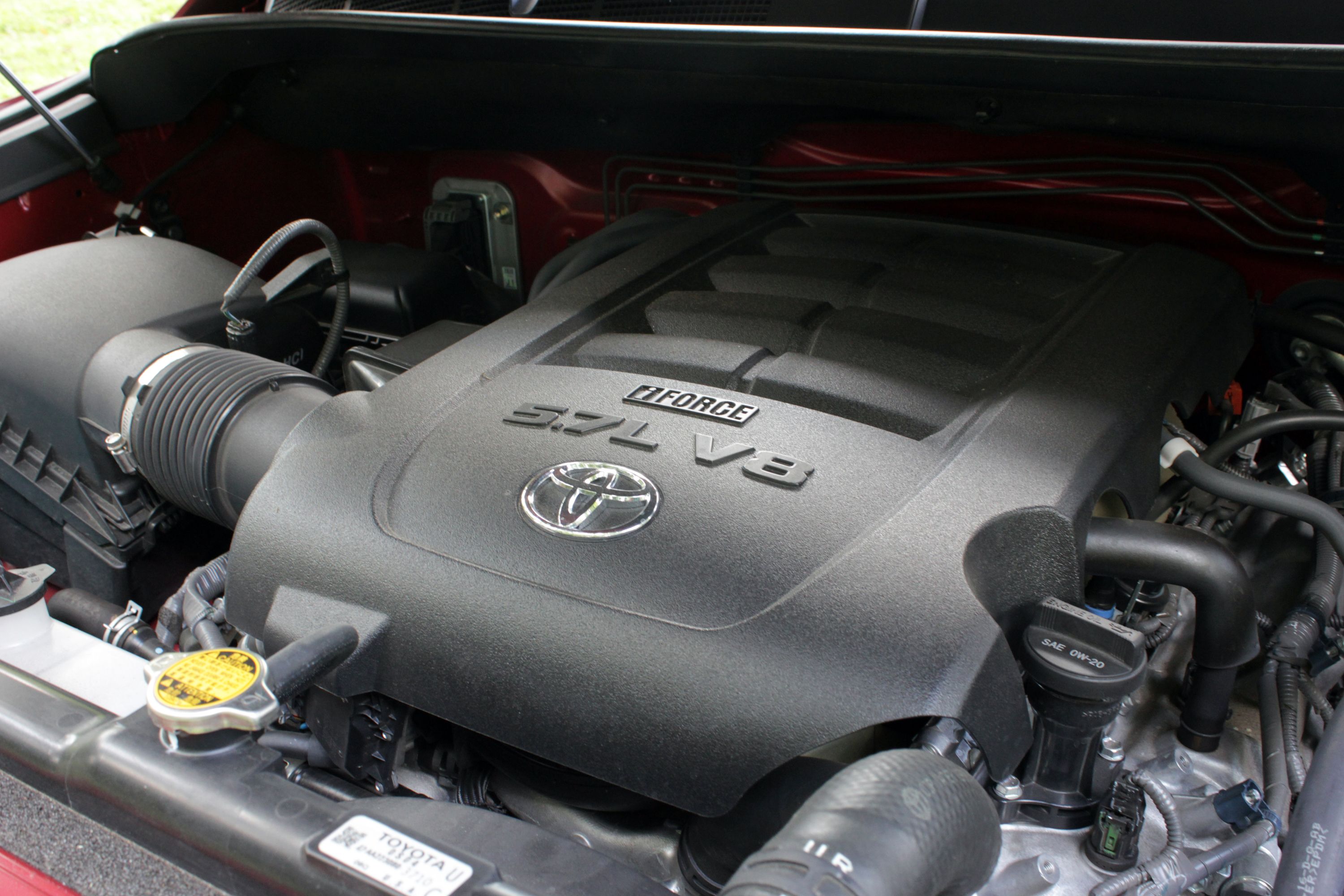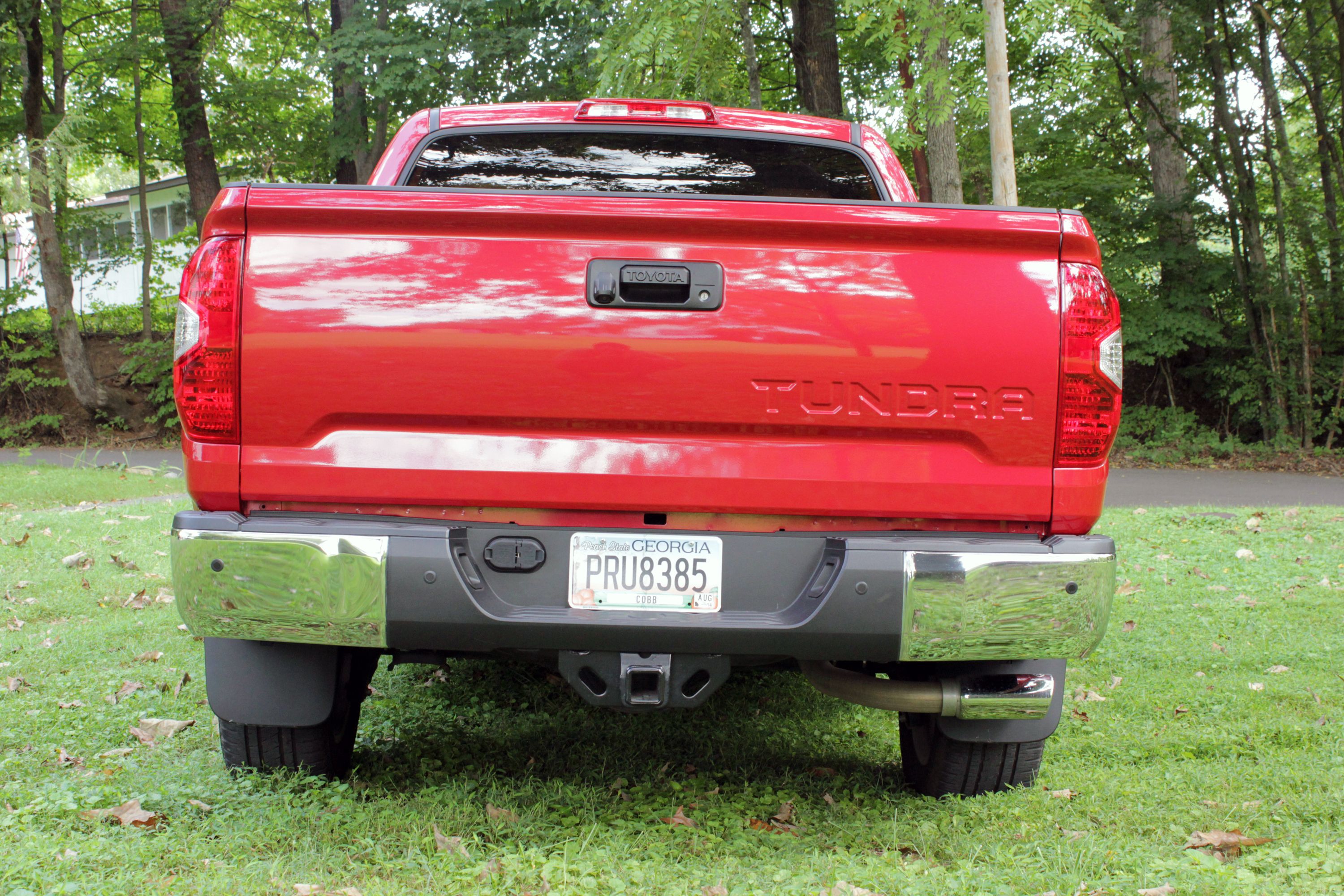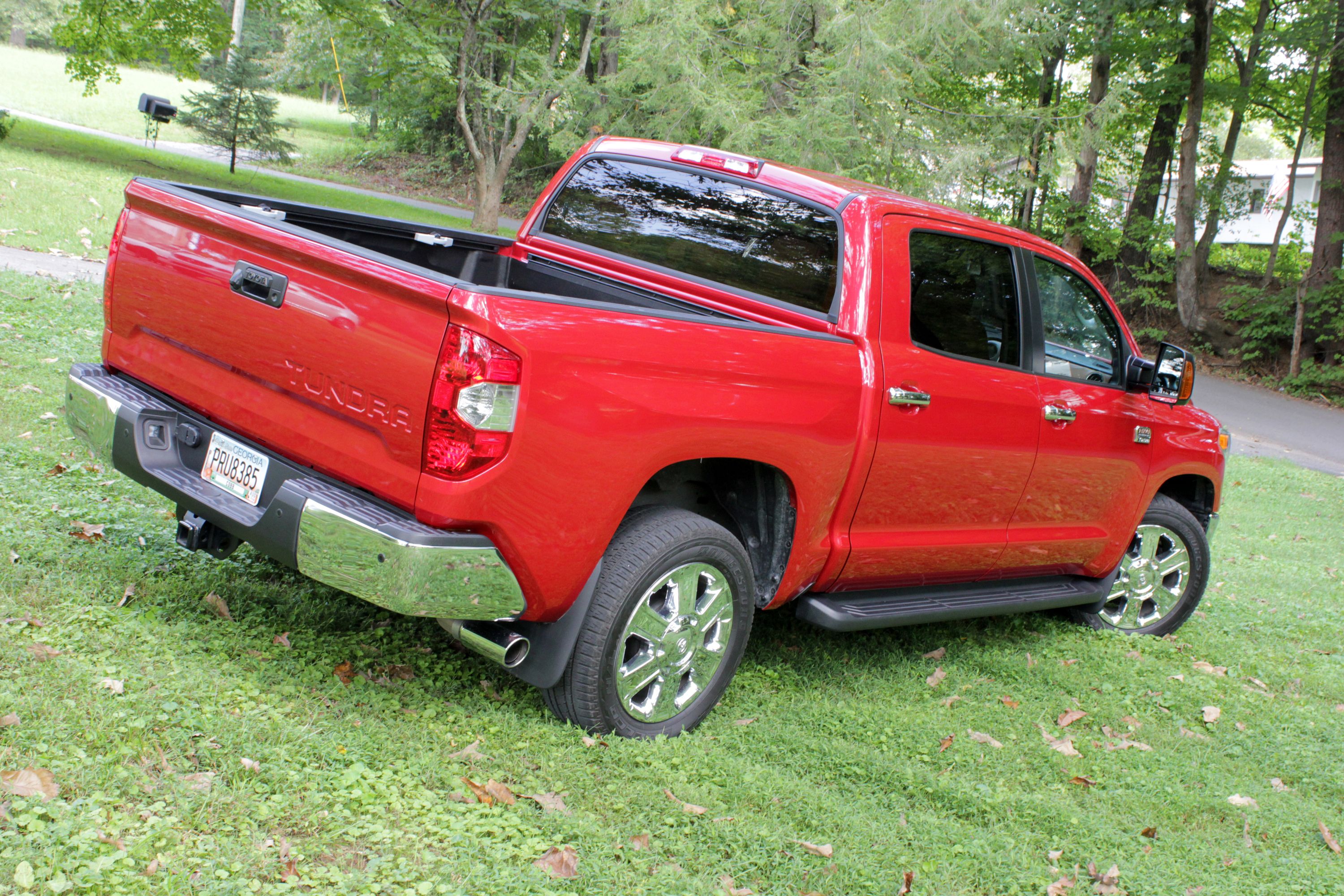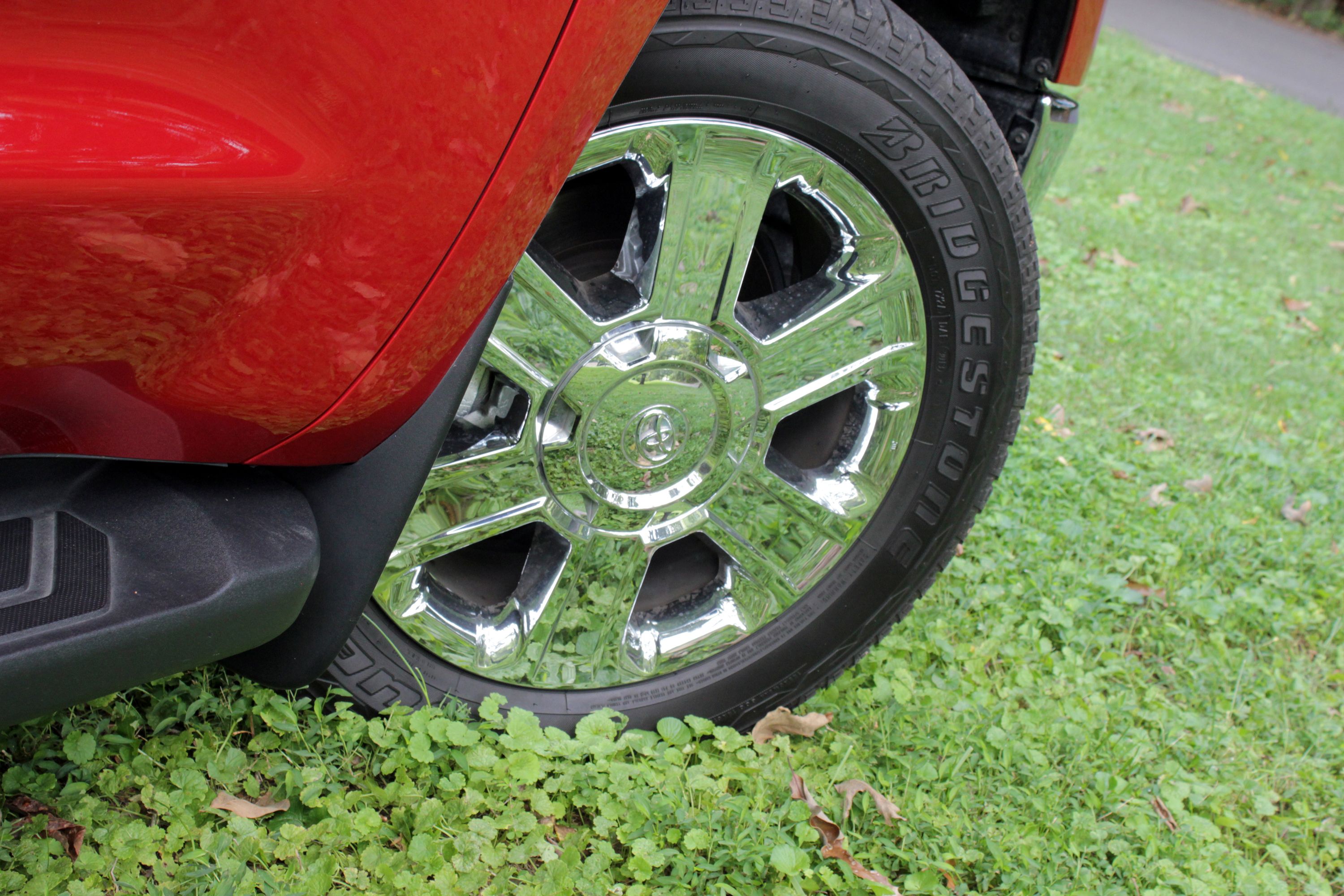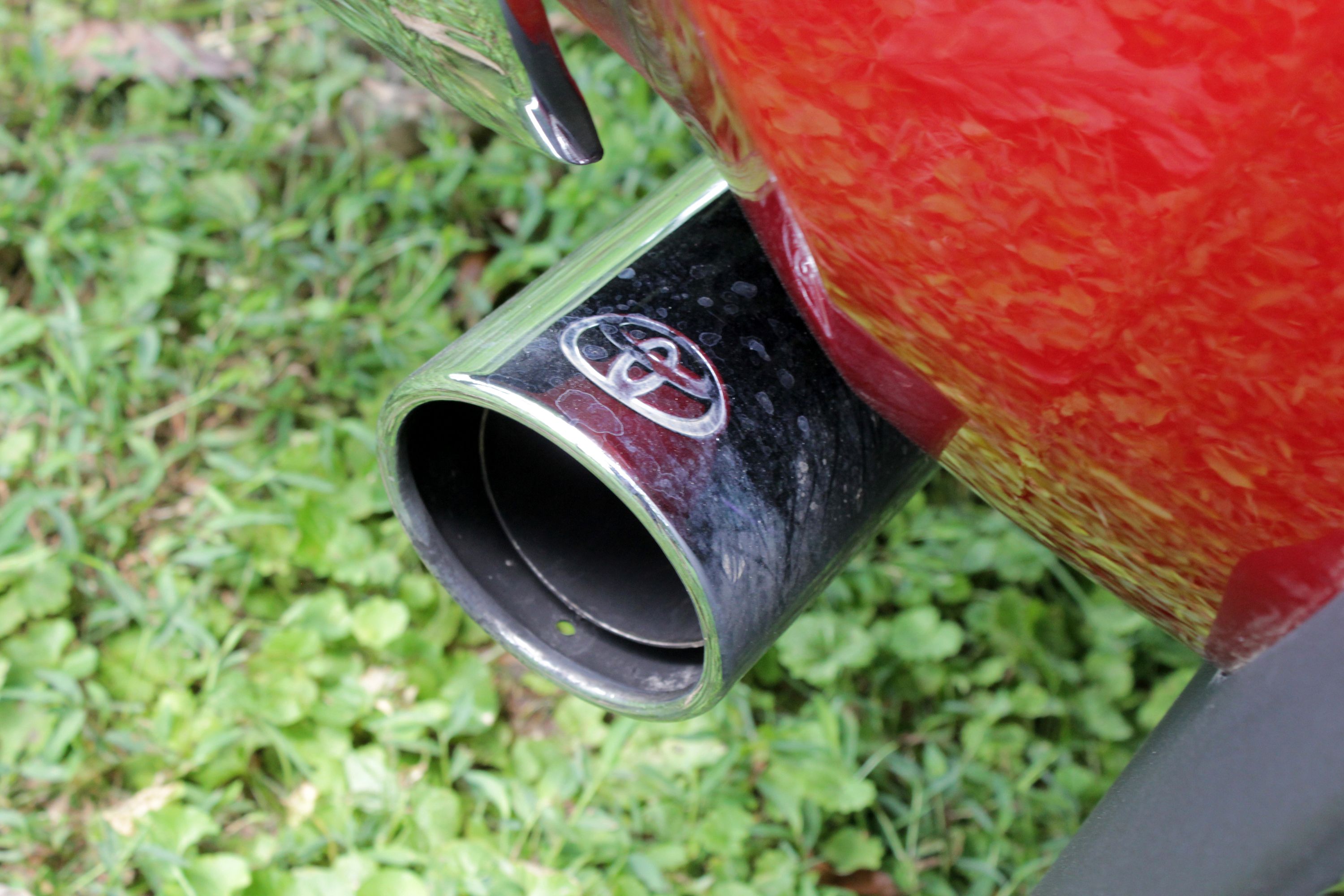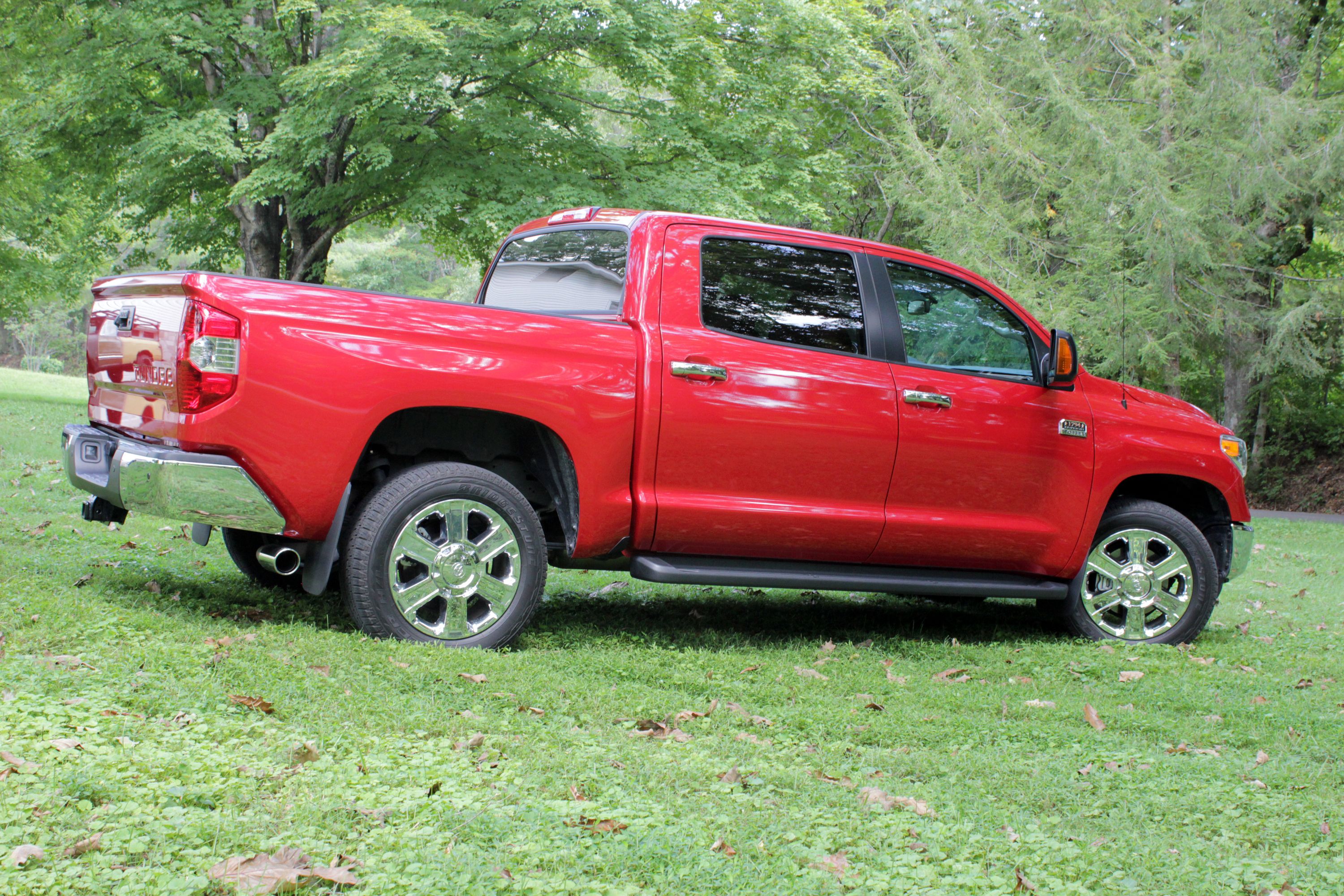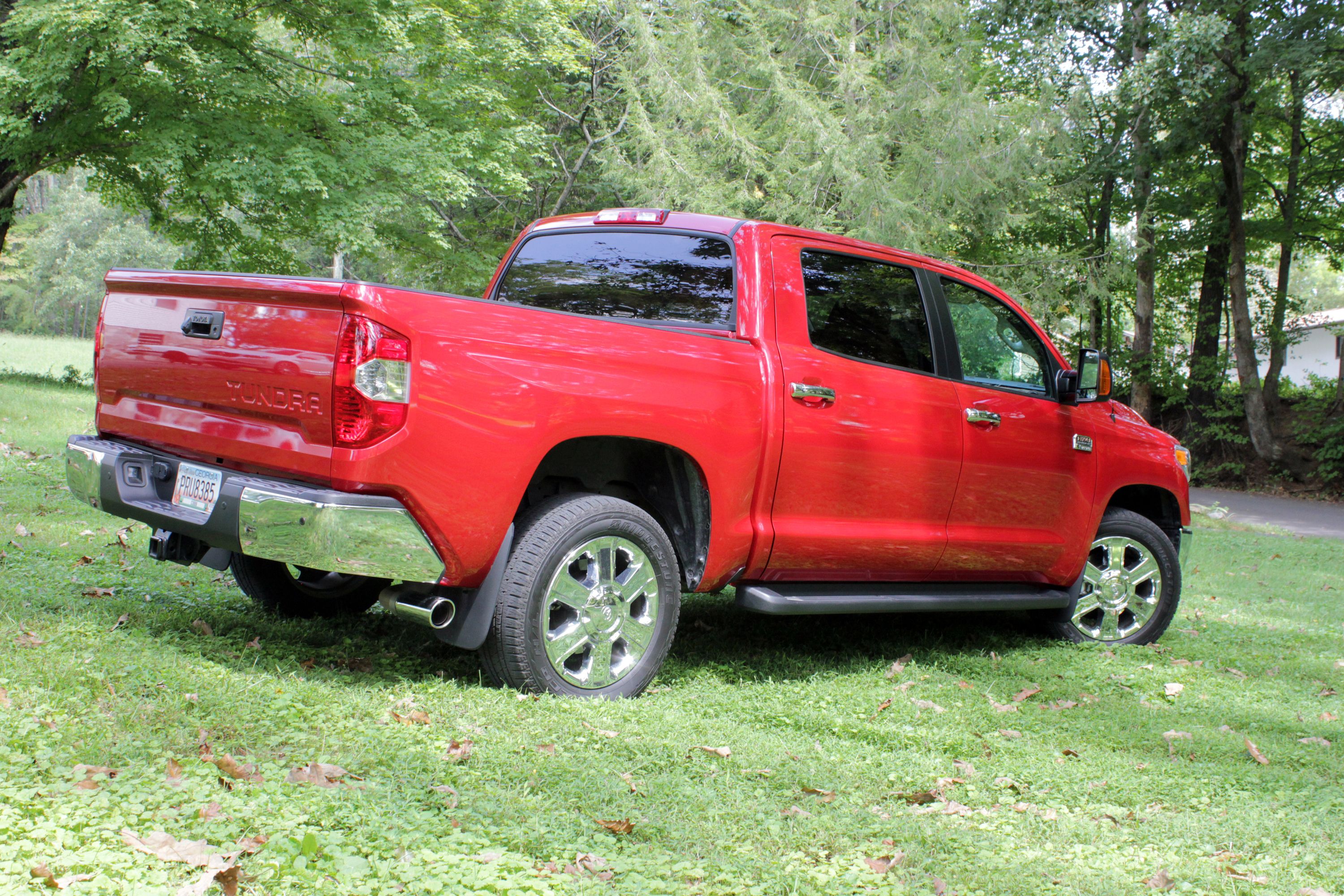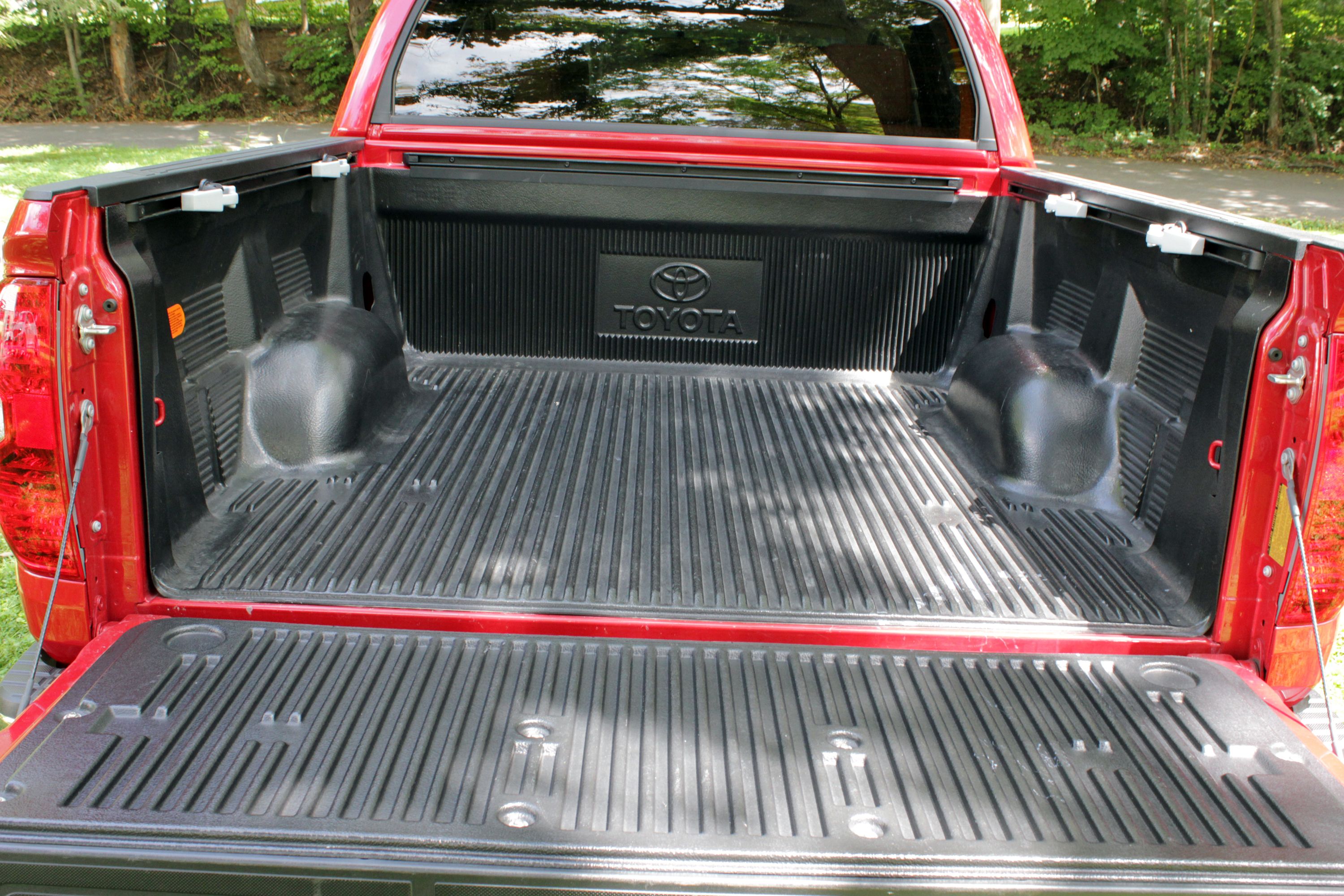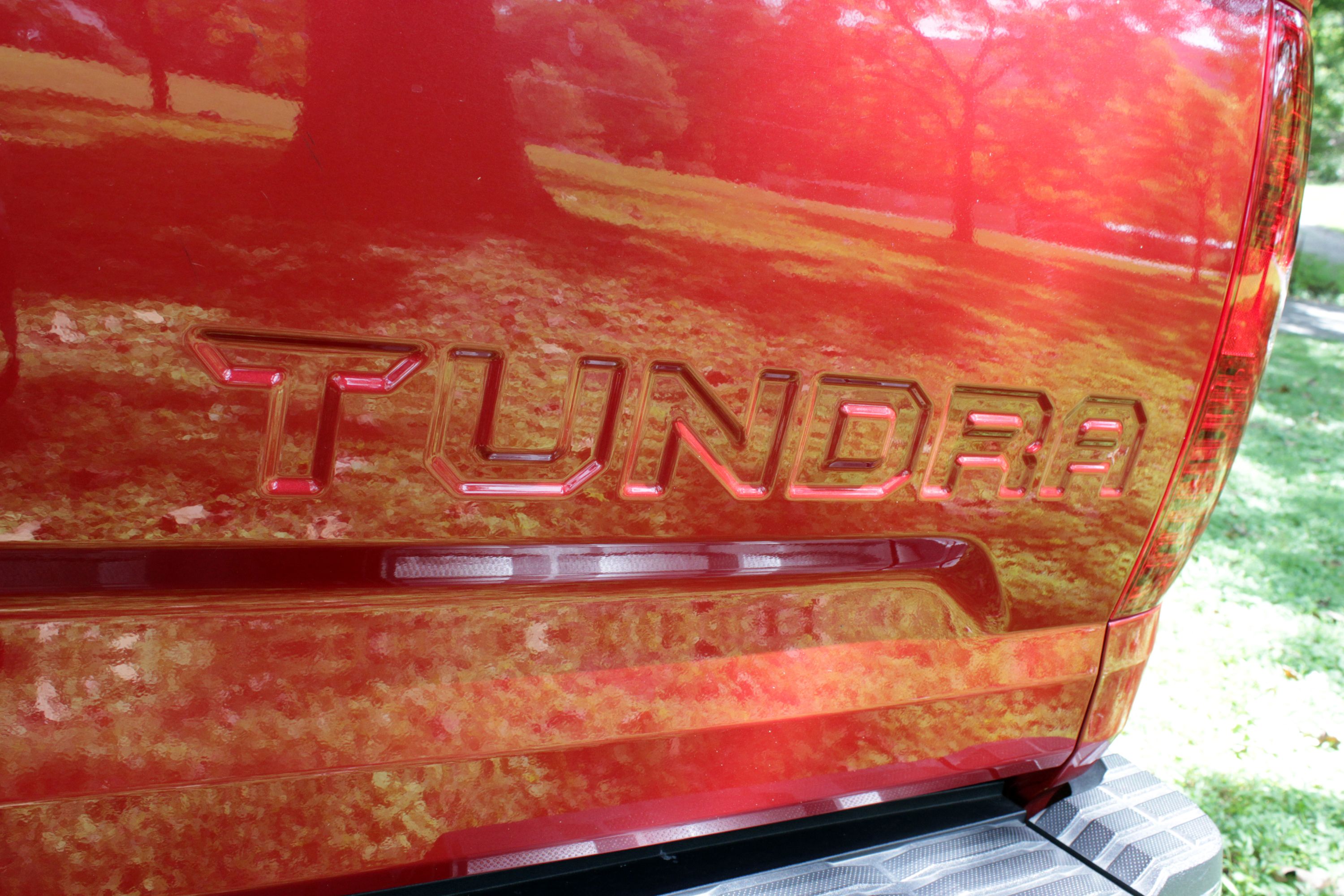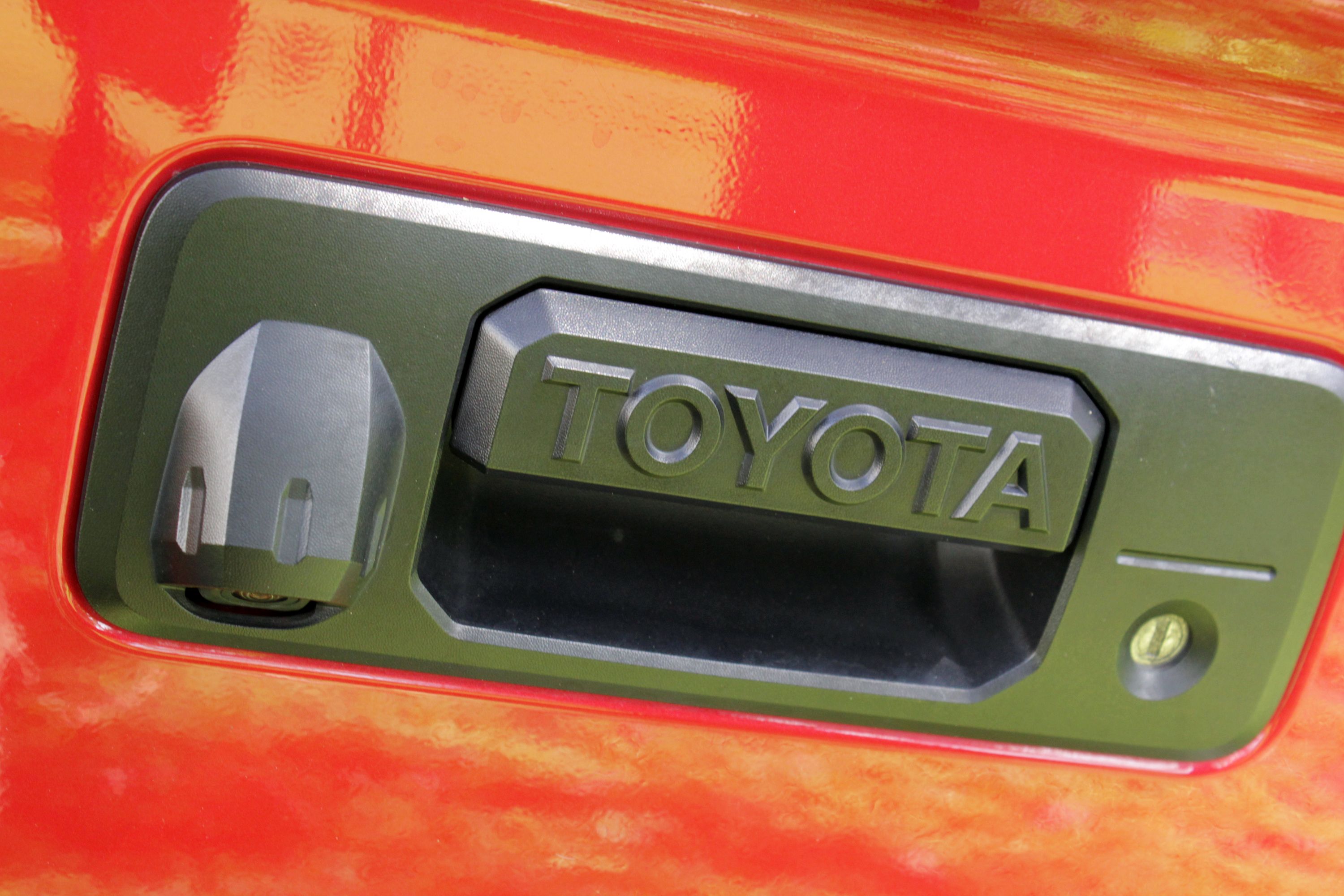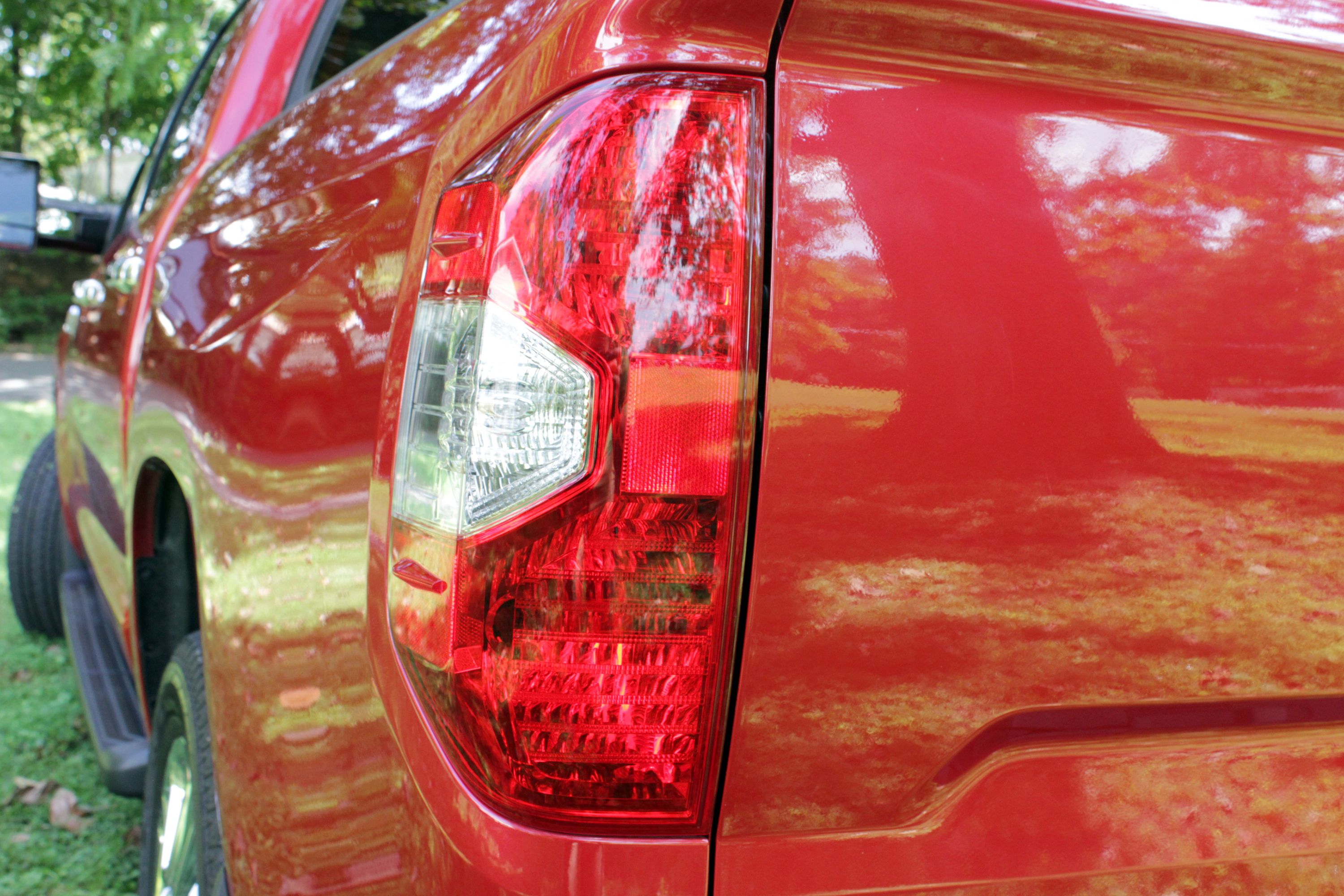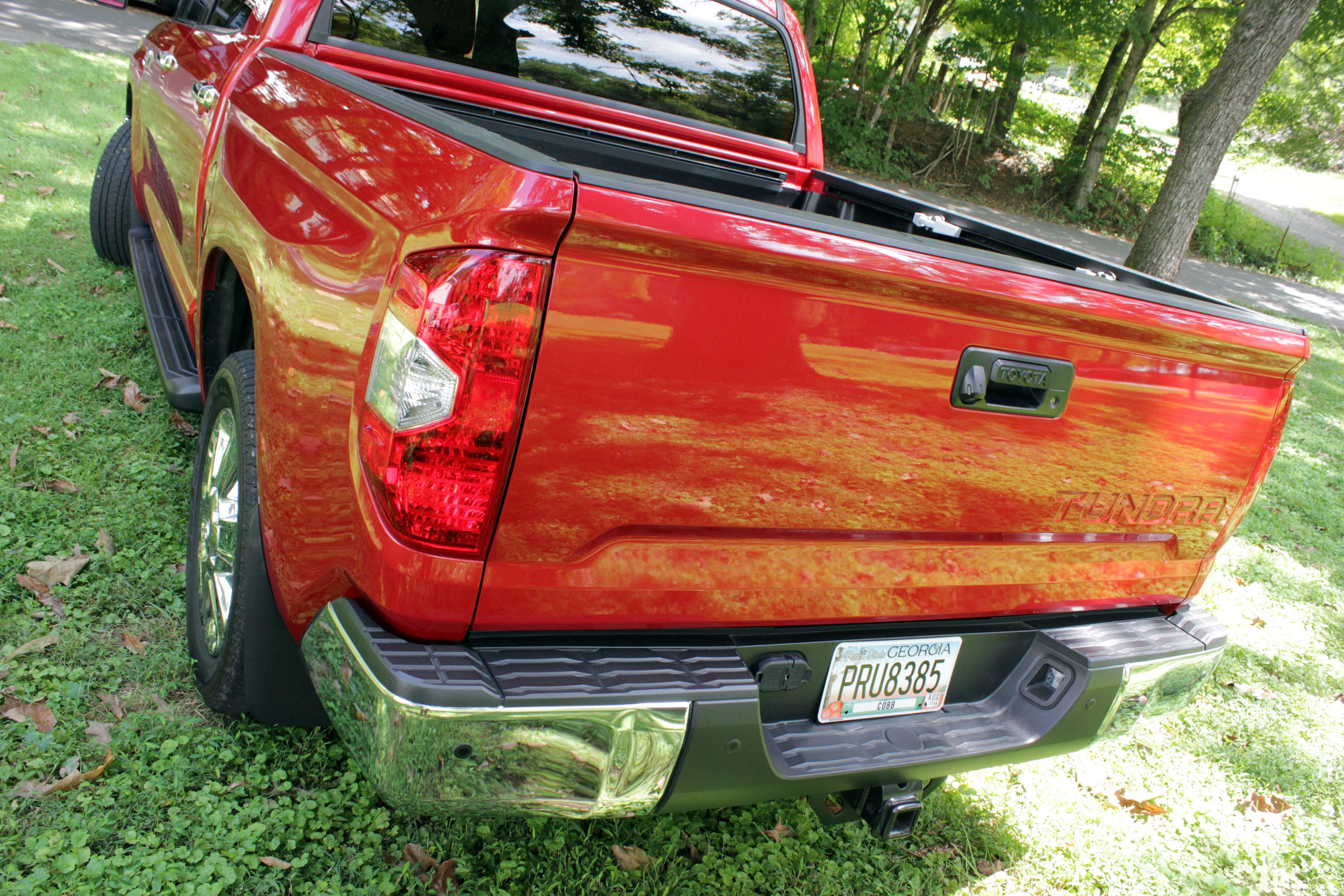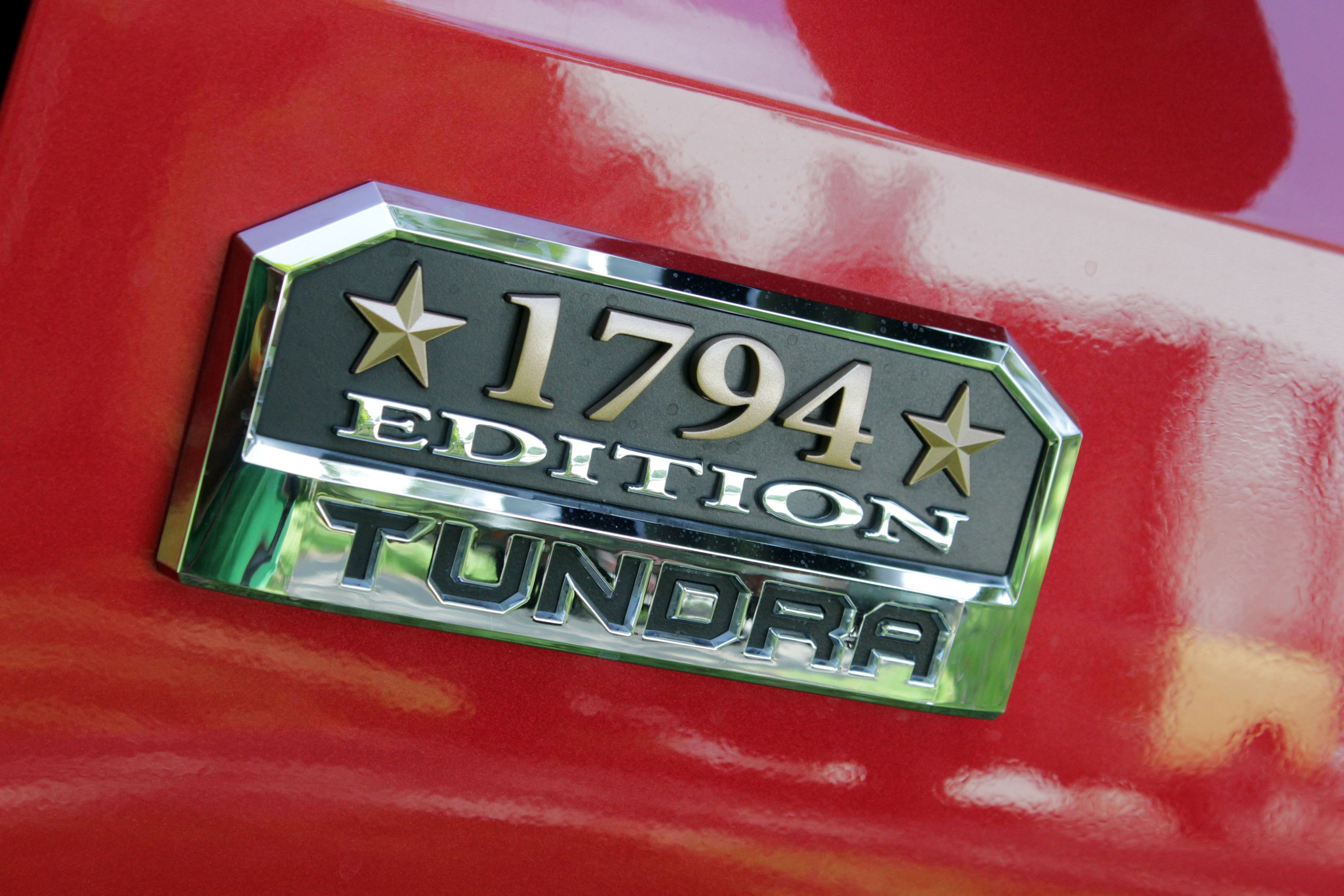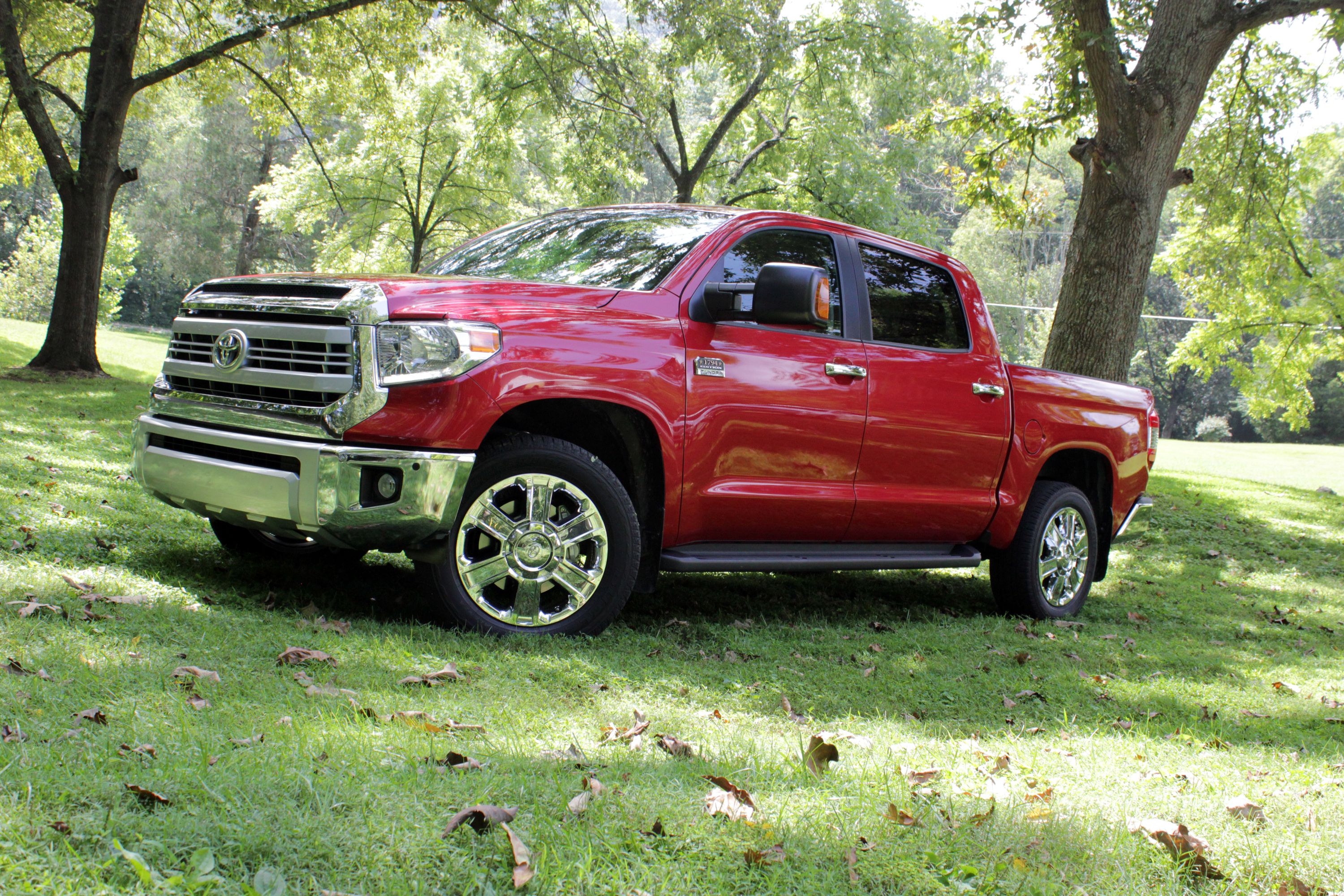The Tundra->ke485 is an obscure model in the Toyota->ke88 lineup. In the world that is dominated by the "Detroit Three," Toyota continually strives to create a pickup that is worthy of the masses, even if the sales are far from stellar. The current-generation truck is getting quite old -- it debuted in 2007 -- so Toyota has given it a full visual overhaul inside and out for 2014. TopSpeed went to the first press drive and came away quite impressed, but how would the truck fair in the real world?
I took possession of a top-level trim 1794 Edition Tundra for a week to put it through its paces. The GM->ke2320 twins are all-new this year, the new Ford F-150->ke423 comes out next year, and the Ram->ke4684 should be getting refreshed soon. In this world of fast evolving pickups does the new Tundra have what it takes to stay relevant?
I spent more than 800 miles beating on this beast to see if it had what it takes to be a real truck->ke1311 that sees real work.
Read on to find out what I though of it.
2014 Toyota Tundra 1794 - Driven
- Make: Array
- Model: 2014 Toyota Tundra 1794 - Driven
- Horsepower: 381
- Torque: 401
- Transmission: 6-speed auto
- [do not use] Vehicle Model: Array
Exterior
The outside of the Tundra is much more rugged and chiseled than the previous model. A large, upright grille with sharp edges and crisp lines dominates the nose of the machine, while fender flares with sharp, flat body lines are the main attraction down the side of the Tundra. The rear is accented with a large TUNDRA script that is stamped into the bottom right corner of the tailgate.
Being the 1794 Edition, this particular Tundra comes with massive chrome bumpers, 20-inch chrome wheels, chrome door handles and some rather large "1794 Edition" badging.
Overall the look is the same as you would get with any traditional truck. Lots of large, lots of square and lots of chrome.
Interior
The interior is a much bigger departure from the old model, and it is a much more interesting part of the truck on the 1794 Edition. This is the highest trim level truck that Toyota sells and it comes loaded with all the goodies you would expect from such a machine. Leather wraps most of the surfaces, the front seats are heated and cooled, and I have all the latest Toyota technologies like Entune and navigation.
Toyota makes a big deal about the exclusive, saddle brown leather. The front seats have suede inserts, and a light-tan contrast stitch holds everything together. You can find the same dark leather and light stitching on the dash and door panels, too. While it all looks great at a glance, there are some serious fit and finish issues. On the dash and door panels, the contrast stitching is anything but straight. It felt like me and my friends had tried to do it by hand after an evening of cold beverages. In a truck that is supposed to represent the top of the Toyota line, this is beyond unacceptable.
The seats and arm-rests are perfectly fine, and when our own Mark and Phil were on the first drive, there were no issues there. I am hoping that this is simply a contained incident, but it is disconcerting to see either way.
There were lots of features I did like about the interior though. The cooled seats worked great, the sunroof was large for a truck, and the power-lowering rear window was great on cool evenings. Just open all the windows and the air flows through the cabin beautifully.
Drivetrain
Normally the Tundra is available with three engine options, a 4.0-liter V-6, a 4.6-liter V-8 and a larger 5.7-liter V-8. When you opt for the 1794 Edition, your only choice is the big-daddy V8. This V-8 is not only the biggest, but it is the most popular engine in the Tundra, and it’s the most powerful. With 381 horsepower on tap and a mighty 401 pound-feet of twist, this engine makes the Tundra quite the capable machine. Shifting duties are handled by a six-speed automatic.
Fuel economy is on par for the segment, but less than stellar at 13 mpg city, 18 mpg highway and 16 mpg combined. I saw about 16.5 in general use with a high percentage of highway driving. While towing I saw that number drop to around 11.
Chassis
While most of the running gear has remained fairly stagnant since the second-gen truck debuted in 2007, the 2014 update comes with a few enhancements to the suspension and chassis. Shock valving has been re-tuned for a better ride, the steering has been altered for better on-center feel and the rear suspension has a staggered shock arrangement to improve damping.
Braking is handled by one of the best set of standard stoppers in the in the segment. Four-wheel discs are found on all-four corners and each rotor is ventilated. The front discs are 13.9 inches in diameter and the rears are 13.6 inches. That extra stopping power is greatly appreciated when you throw a trailer on the rear of the machine.
Driving impressions
While the Tundra may have some old buns under its skin, it works in its favor in a few ways. The first is that it still feels like an old truck. For a lot of people that could be seen as a problem, but I tend to dislike trucks that behave and feel like cars. Perhaps it is my love for old metal, but nothing makes me happier than climbing into a truck that feels a little large, unwieldy and maybe just a bit uncivilized.
The truck exhibits just enough bend and sway over large broken pavement and train tracks to let you know there is still a proper frame hiding under the body work, and the huge square hood that dominates your forward vision provides a sense of power. It is all things that a good truck should have and feel.
Everything isn’t perfect though. While the truck rides the way I expect it to, and the new interior looks great, I found the seats to be a bit uncomfortable on longer trips. The seat bottoms are just a bit too stiff for my taste and after about two hours on the road I began to fidget and move a lot trying to find a comfortable position. I also took some issue with storage and plug options in the Tundra. While new trucks, like the Silverado, have been converted into rolling offices with plenty of USB ports, 12-volt plugs and intelligent storage solutions, like a center console that doubles as a hanging file unit, the Tundra has just a few large open pockets and only one USB port. There are several 12-volt plugs at least.
When it came time to tow, the Tundra recovered most of the points it lost for its interior. I recently purchased a new horse trailer, but I had yet to retrieve it. The trailer was a bit over 100 miles from the house, so it wasn’t going to be a short haul. When I made it to the trailer, I found my first-ever real use for a backup camera. The camera in the Tundra has a dashed line that runs directly down the center of the display that is to signify the location of the hitch. It made backing up to the trailer incredibly easy.
Hooking up was also incredibly easy thanks to the inclusion of both round and square plug connections. That meant that I didn’t have to worry about bringing an adapter or anything with me. The trailer itself is a two-horse slant trailer with an attached tack room, four wheels and torsion beam suspension. In other words, it’s not exactly a light load. The trailer itself is just shy of 4,000 pounds empty and it came with a bit of tack, some spare parts and more loaded inside. I estimate the total load to be around 4,400 pounds. Not exactly a large load, but it is about half of the maximum rating for the truck. It also puts my total weight around 10,000 pounds including the curb weight of the truck.
This is when I really started to respect the Tundra. I could tell that the trailer was attached to the rear of the machine, but the Tow-Haul mode made sure the transmission was always in the right gear and the large brakes made quick work of slowing my moving mass. It isn’t the best towing truck I have ever driven, but it is far more capable than I first expected it to be. I am not entirely sure how well it would do when approaching that maximum weight limit, but for a medium-size towing job, the Tundra did very respectably.
Price
Starting Price for a Tundra 1794 Edition is $44,270. That makes it cheaper than the Silverado High Country, the Ford King Ranch and the GMC Denali. The only options on this truck include the 20-inch chrome wheels for a bargain price of $220, running boards for $345, wheel locks for $81 and a bed liner that cost $73. All in after destination this particular Tundra rang in at a healthy $46,034. Not exactly cheap, but a relative steal compared to other “luxury” trucks.
Competitors
Chevrolet Silverado 1500 High Country
The Silverado High Country is probably the biggest competitor facing the Tundra 1794 today. The High Country trim and the Silverado are all-new for this year. New engines, a new chassis and more have made the Silverado more capable, more luxurious and more fuel efficient. I have yet to drive the new Silverado, but I have a sneaking suspicion that it may be better than the Tundra. That said, the Tundra is cheaper, and the base 1794 comes with a more powerful engine than the base High Country.
The Silverado is a better rolling office though, with more connectivity and power options, as well as some smarter-organized storage compartments. The Chevy also has a few extra touches, like the integrated bumper step, that make it a bit more usable.
Ford F-150 King Ranch
The Ford King Ranch is a more direct competitor to the Tundra. It is an older truck that has relied on a few minor updates to keep it fresh. It comes powered by a comparably anemic, 5.0-liter V-8 that has “only” 360 horsepower and 380 pound feet of torque. In the world of trucks, numbers reign supreme and the Ford doesn’t have the numbers to compete. While it is lacking in power, it does boast a much higher fuel economy rating of 21 mpg on the highway compared to the 18 mpg of the Tundra.
In the style department, the Tundra seems to beat the Ford again. With stock 18-inch rollers the wheels on the Ford look small and silly compared to the large 20-inch alloys on the Toyota. Pricing is pretty close to identical though with only a few hundred dollars splitting the base prices.
While the Tundra seems to take the crown on paper over the world’s best-selling pickup truck, there is an all-new F-150 coming next year that is set on upending the entire truck market. I am not sure the Tundra has what it takes to steal buyers from the King Ranch once the new truck arrives.
Conclusion
The Toyota Tundra 1794 Edition is a perfectly capable truck. It has enough power to tow most loads, enough luxury to please most buyers, and despite the fit and finish flaws, it is a nice-looking machine that should last for many years. The big problem is that the Tundra is still built on old bones, and every major competitor is in the process of overhauling their truck lineup. In the hyper-competitive pickup market, being “good enough” won’t cut it.
The new GM trucks are here now, the new Ford is here next year, and even Nissan is readying a new Titan. If Toyota wants to continue enjoying its mild success in the truck market it needs to step up, and quickly. Today the Tundra is a competitive truck that holds a slight price advantage over the rest of the market. Unless it gets some more thorough updates though, it will be an obsolete machine in less than a year. That would frighten me as a buyer.

